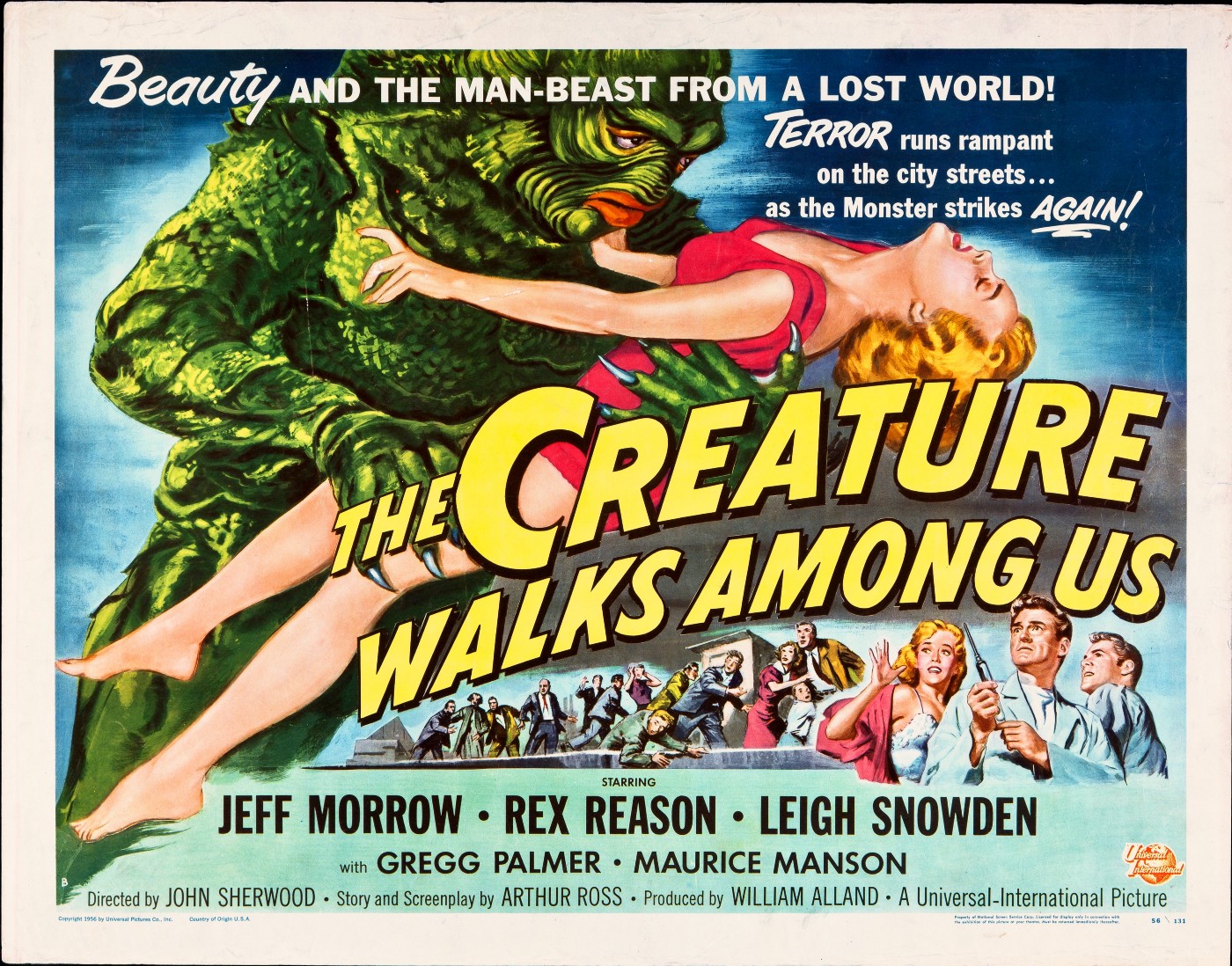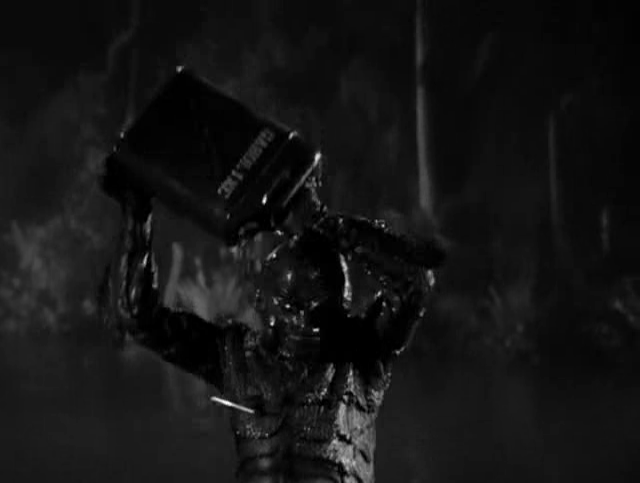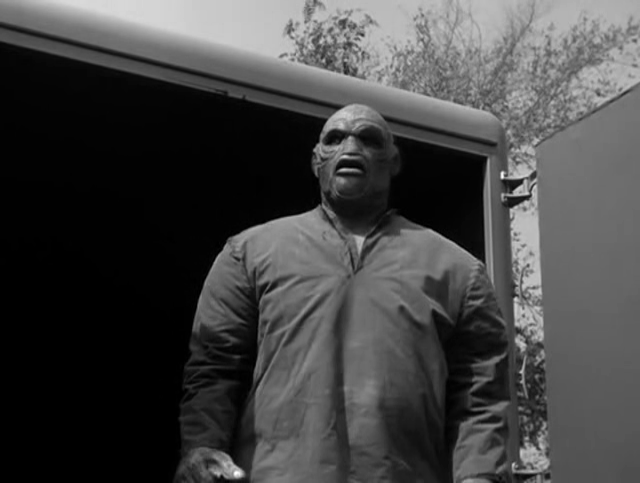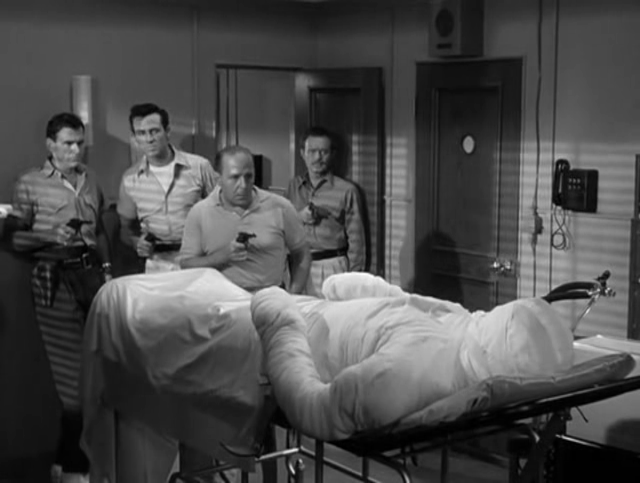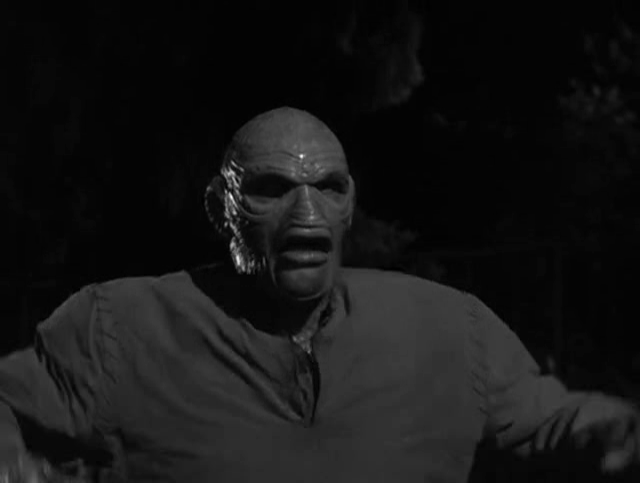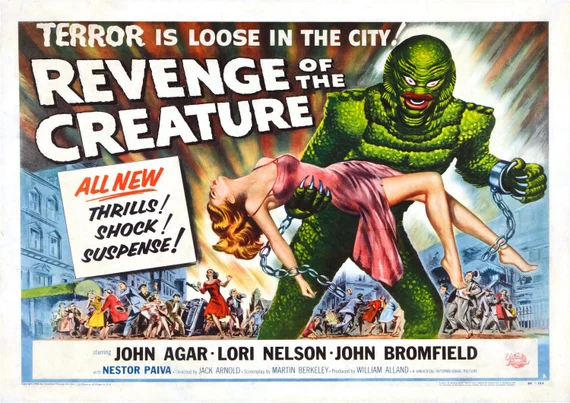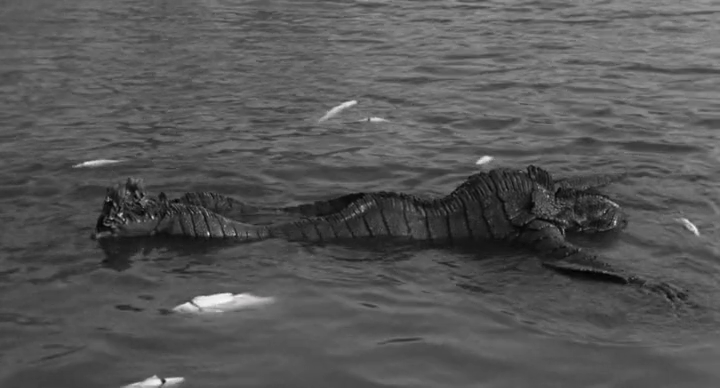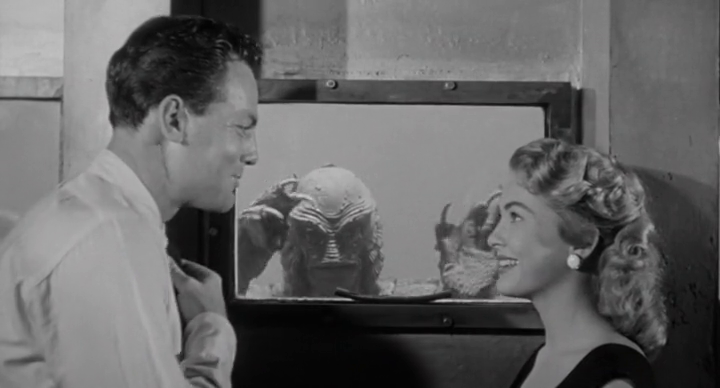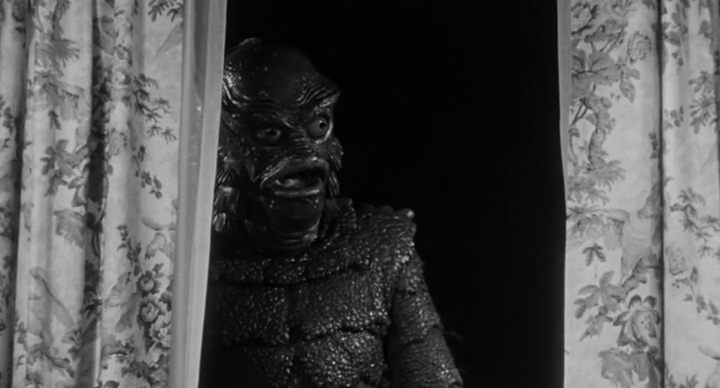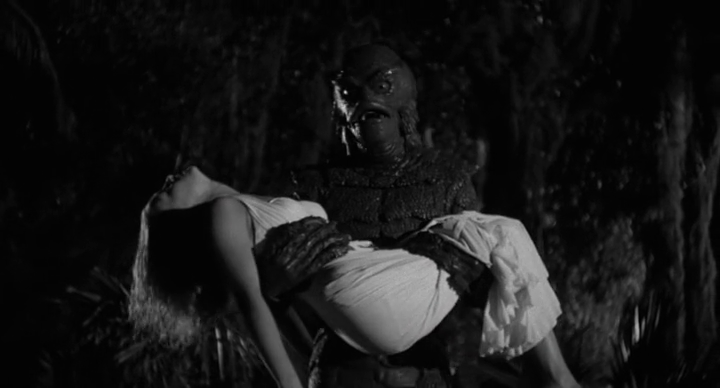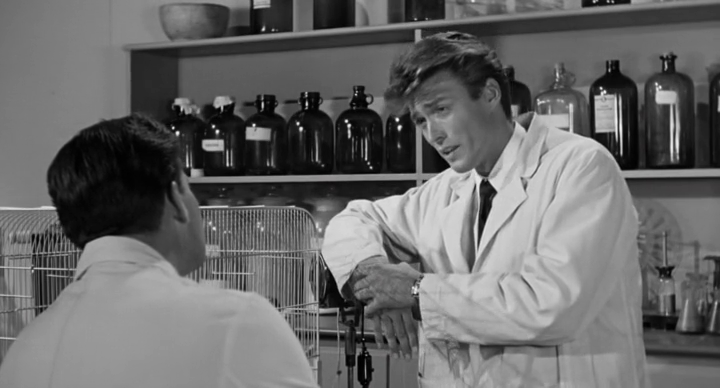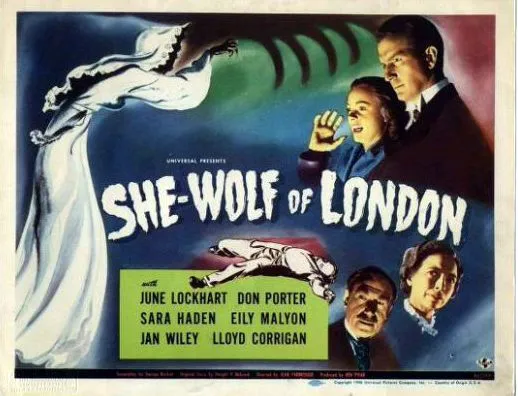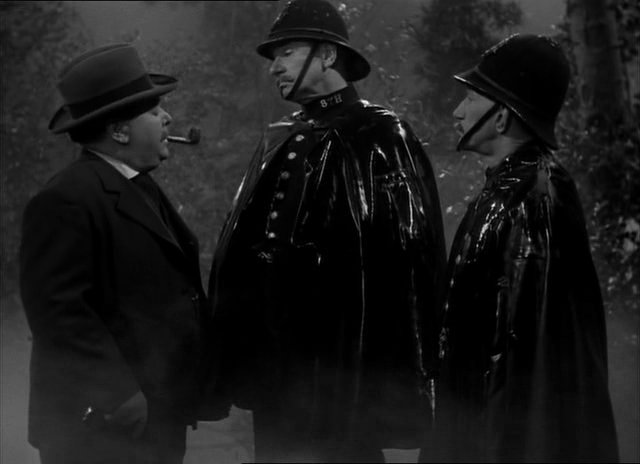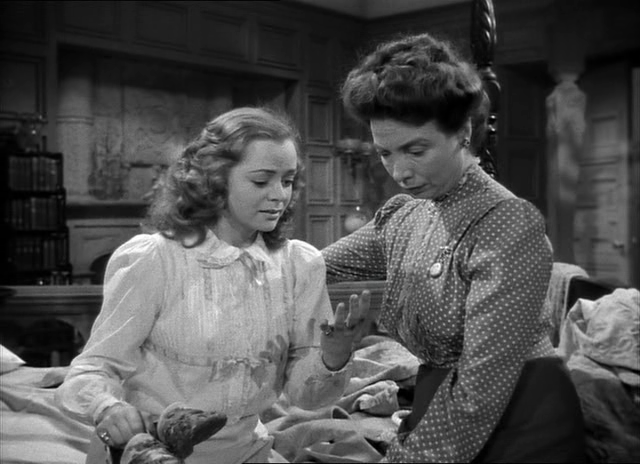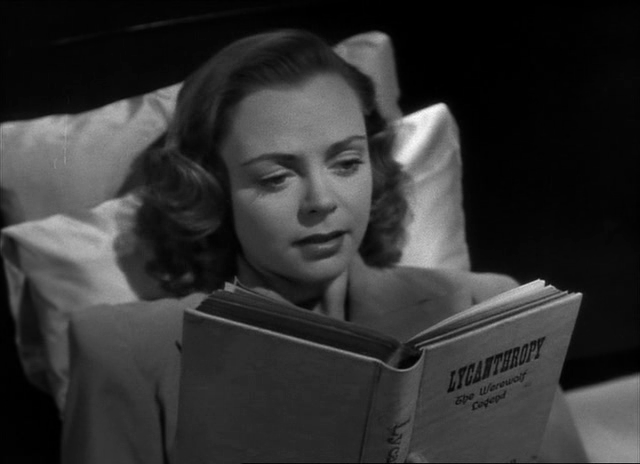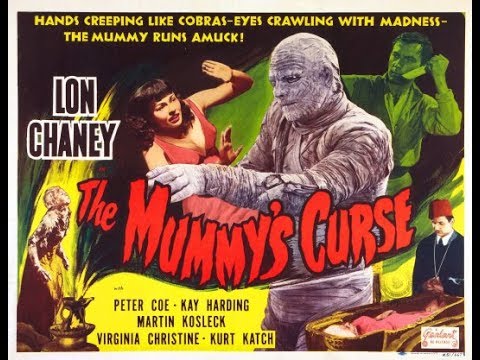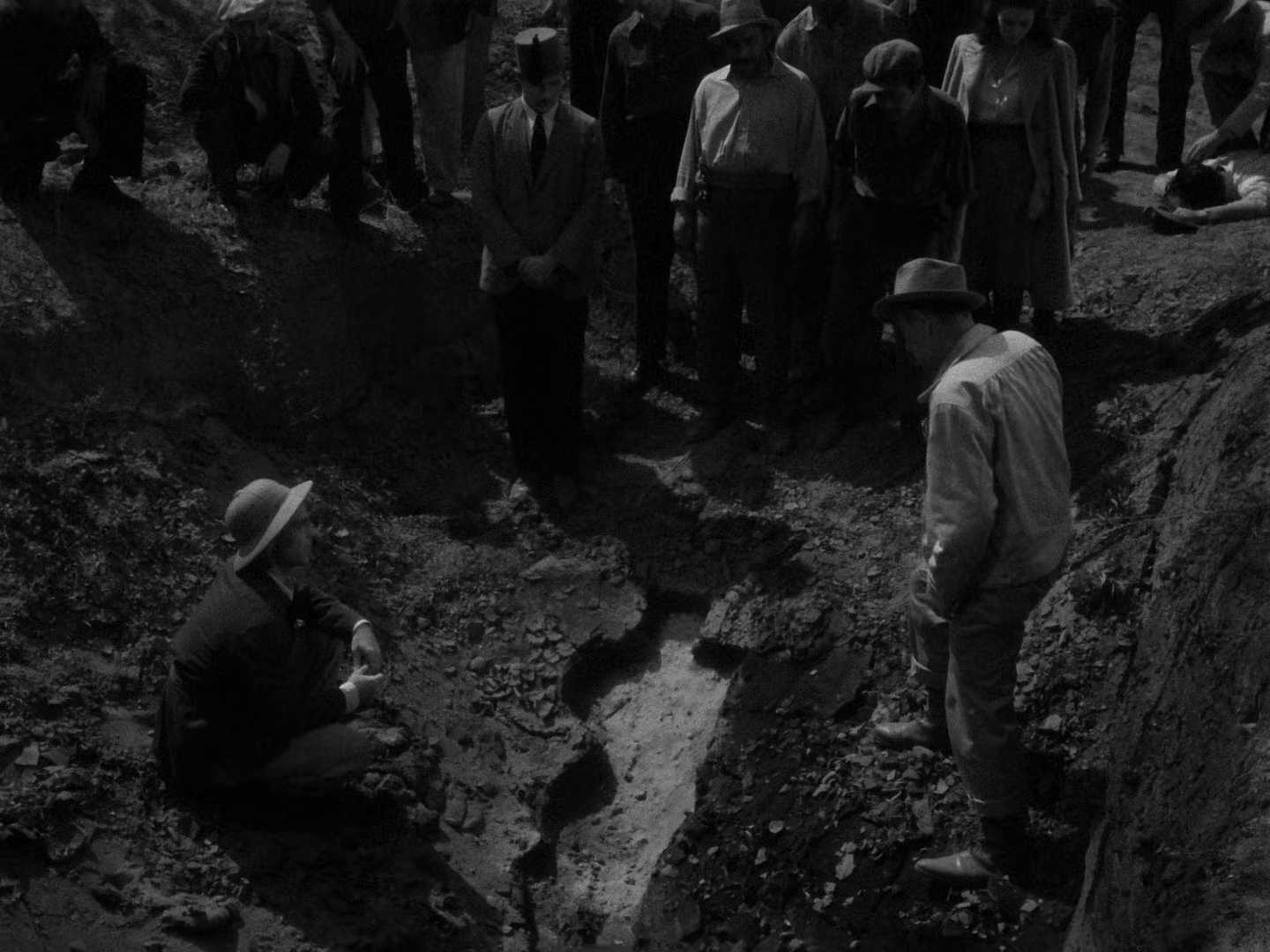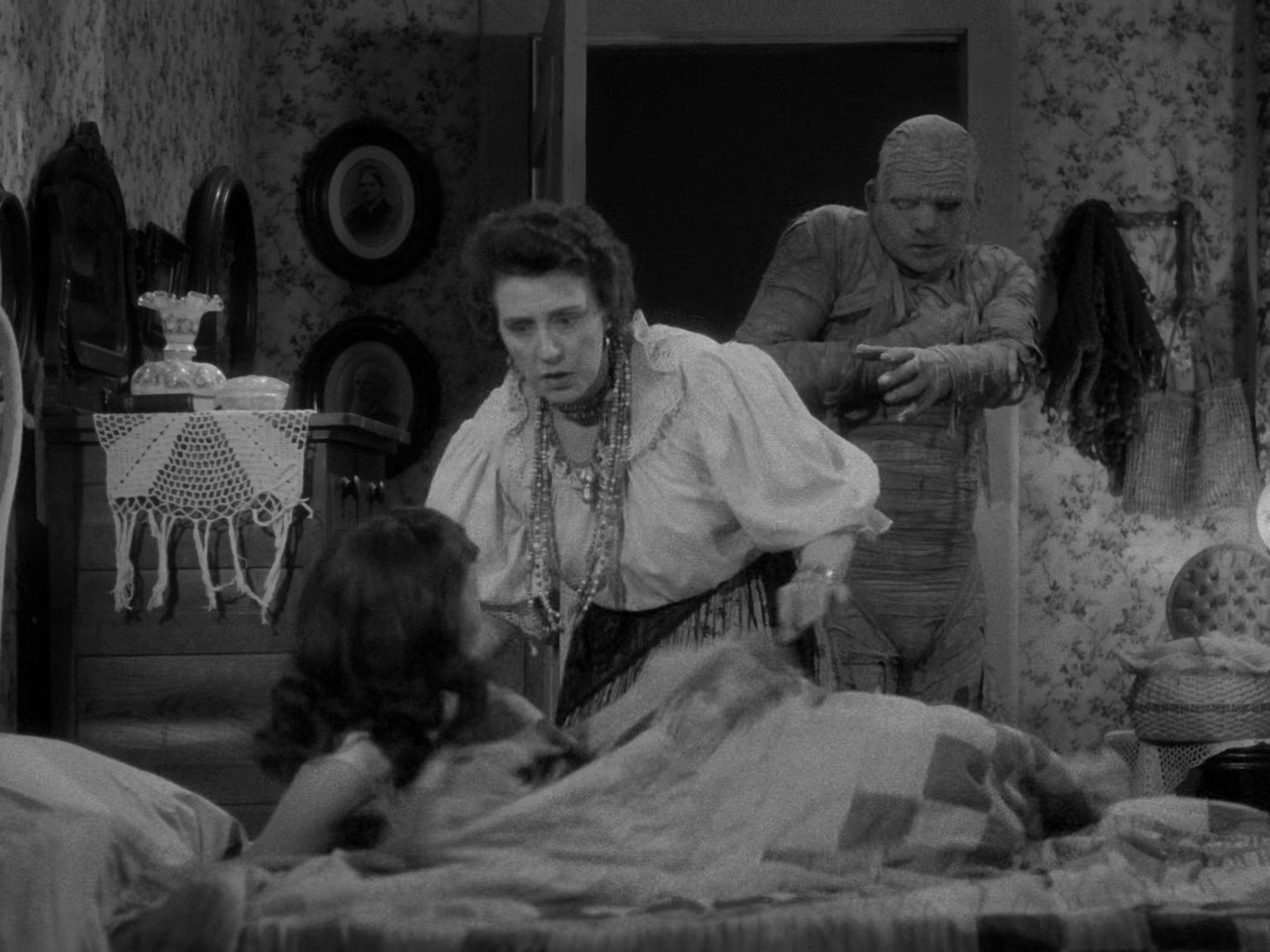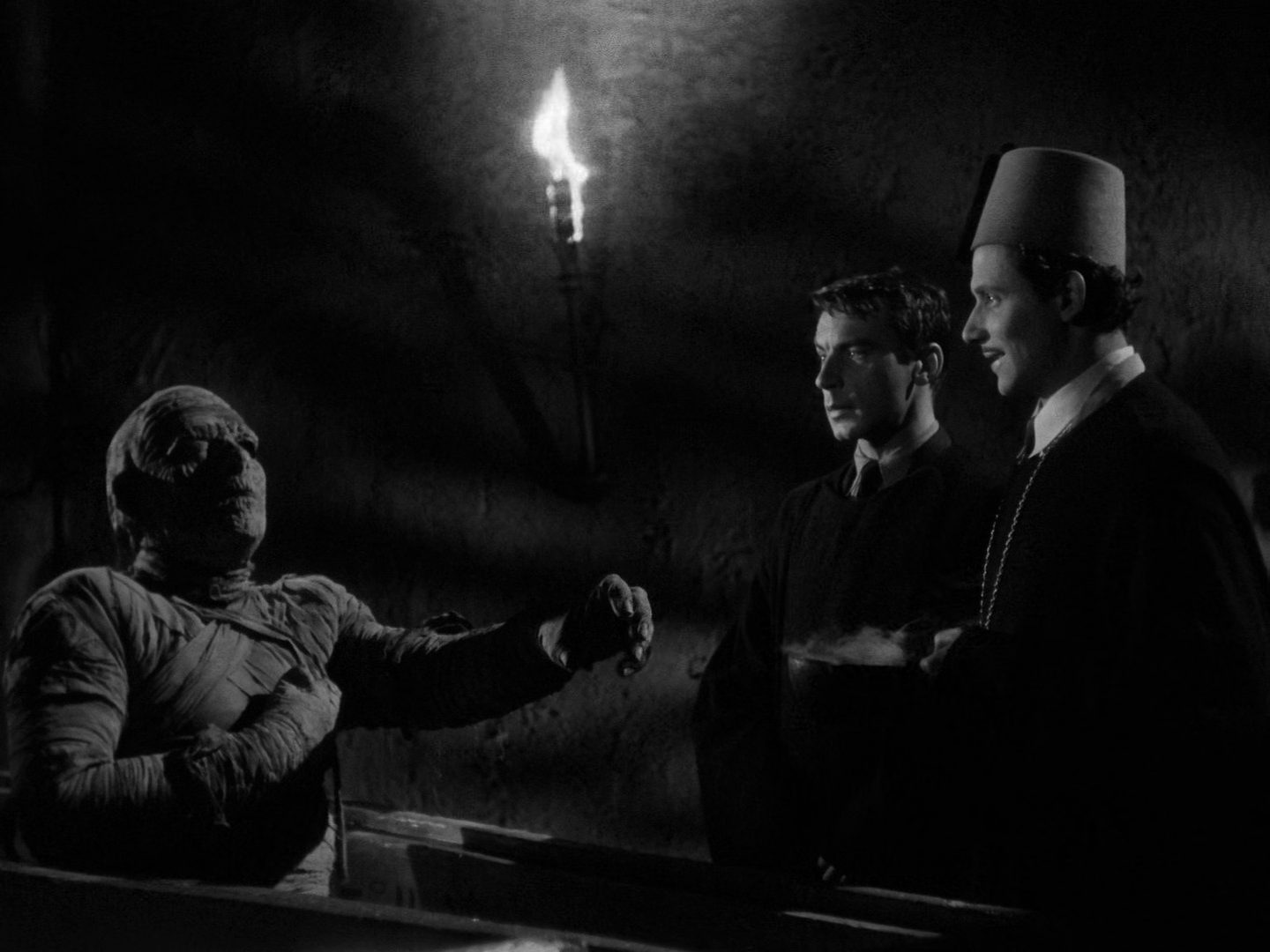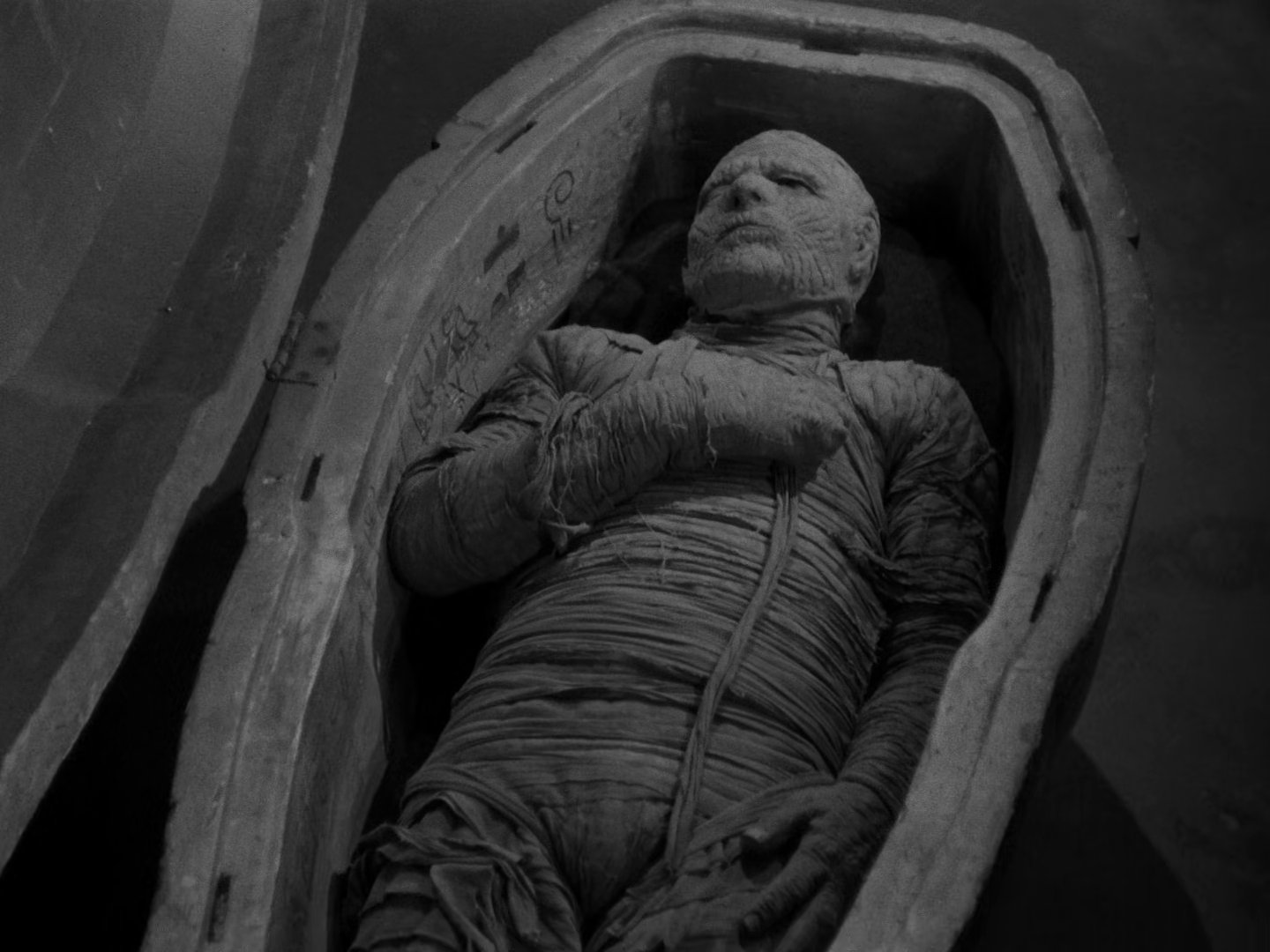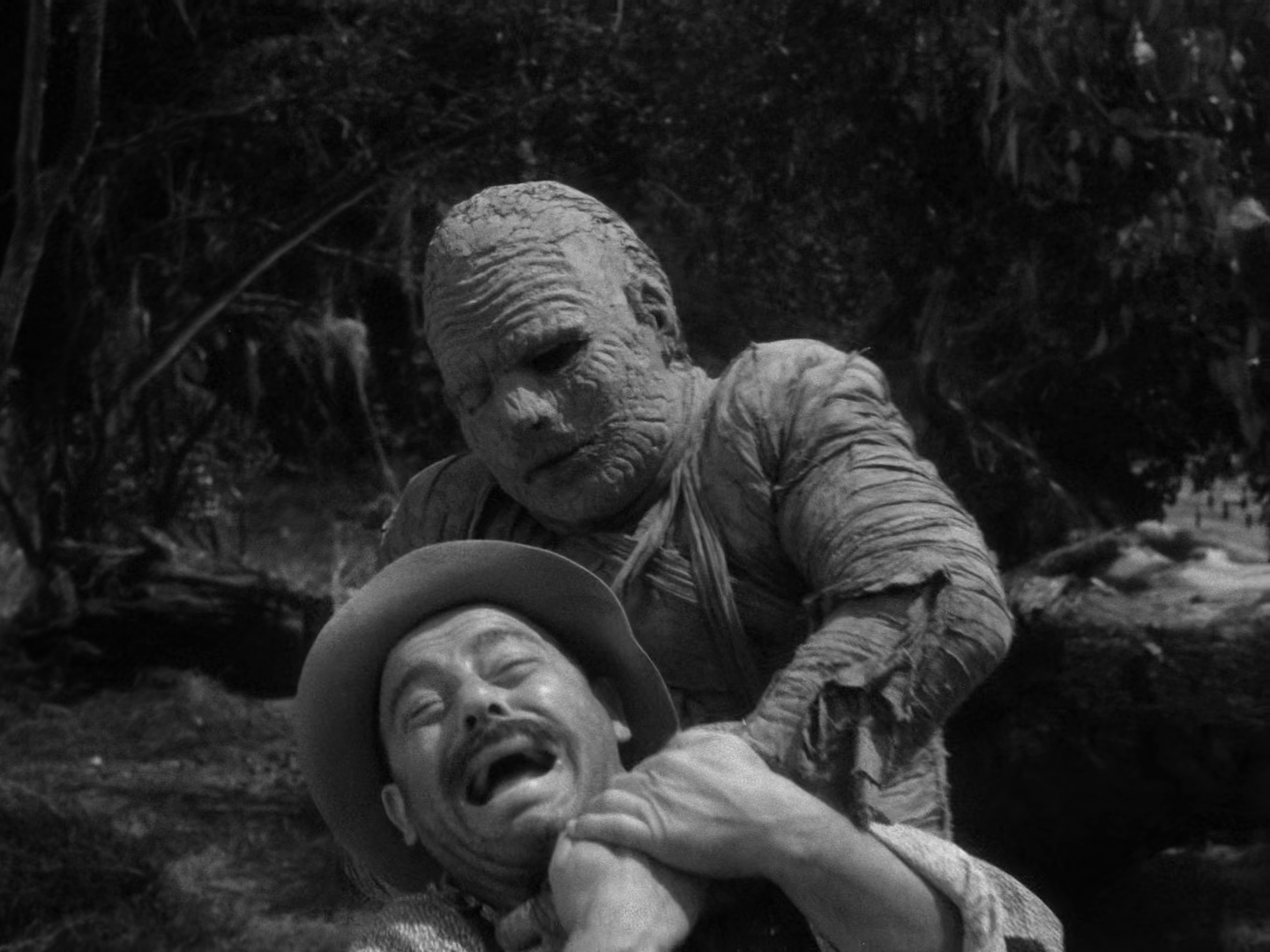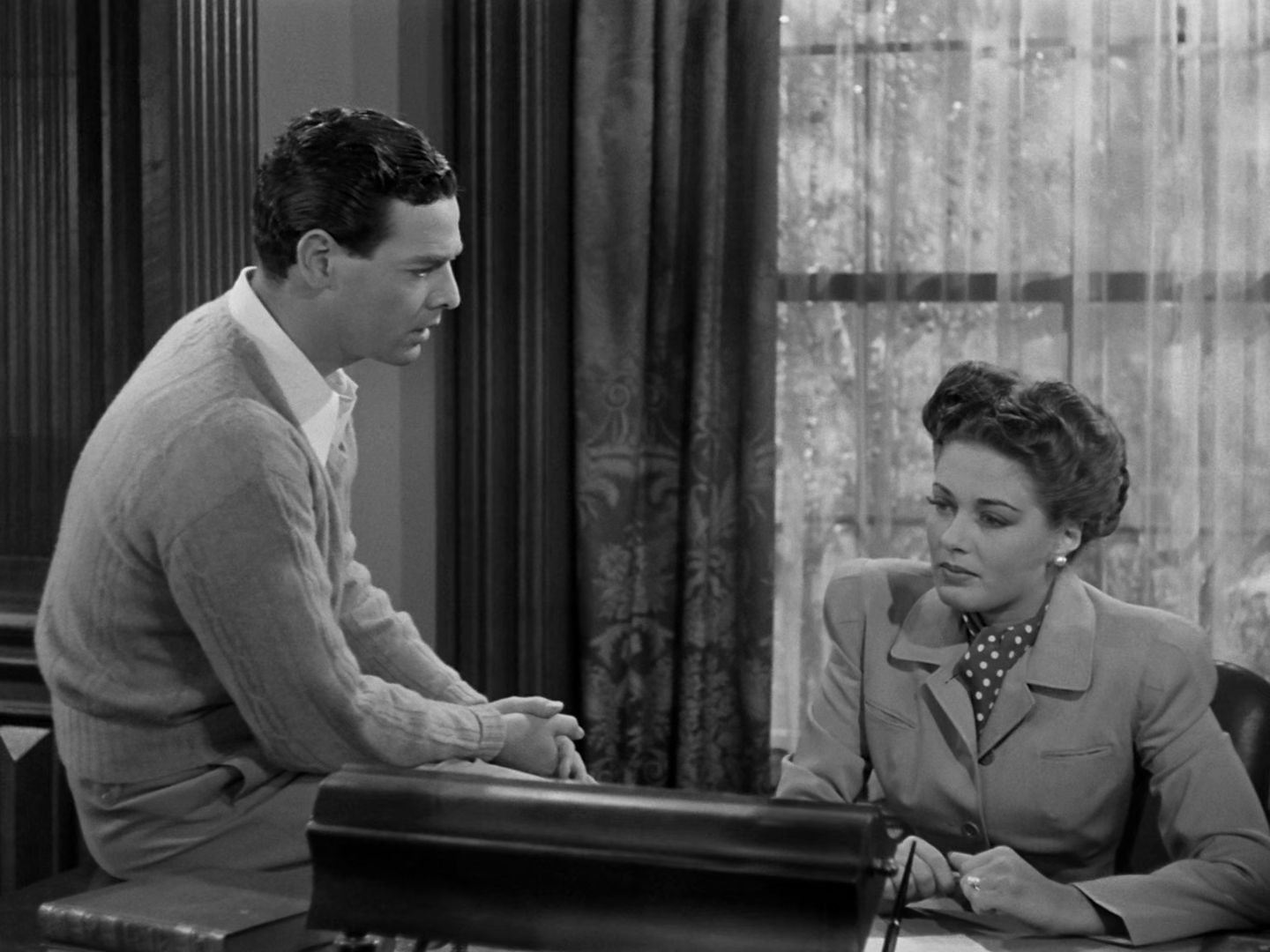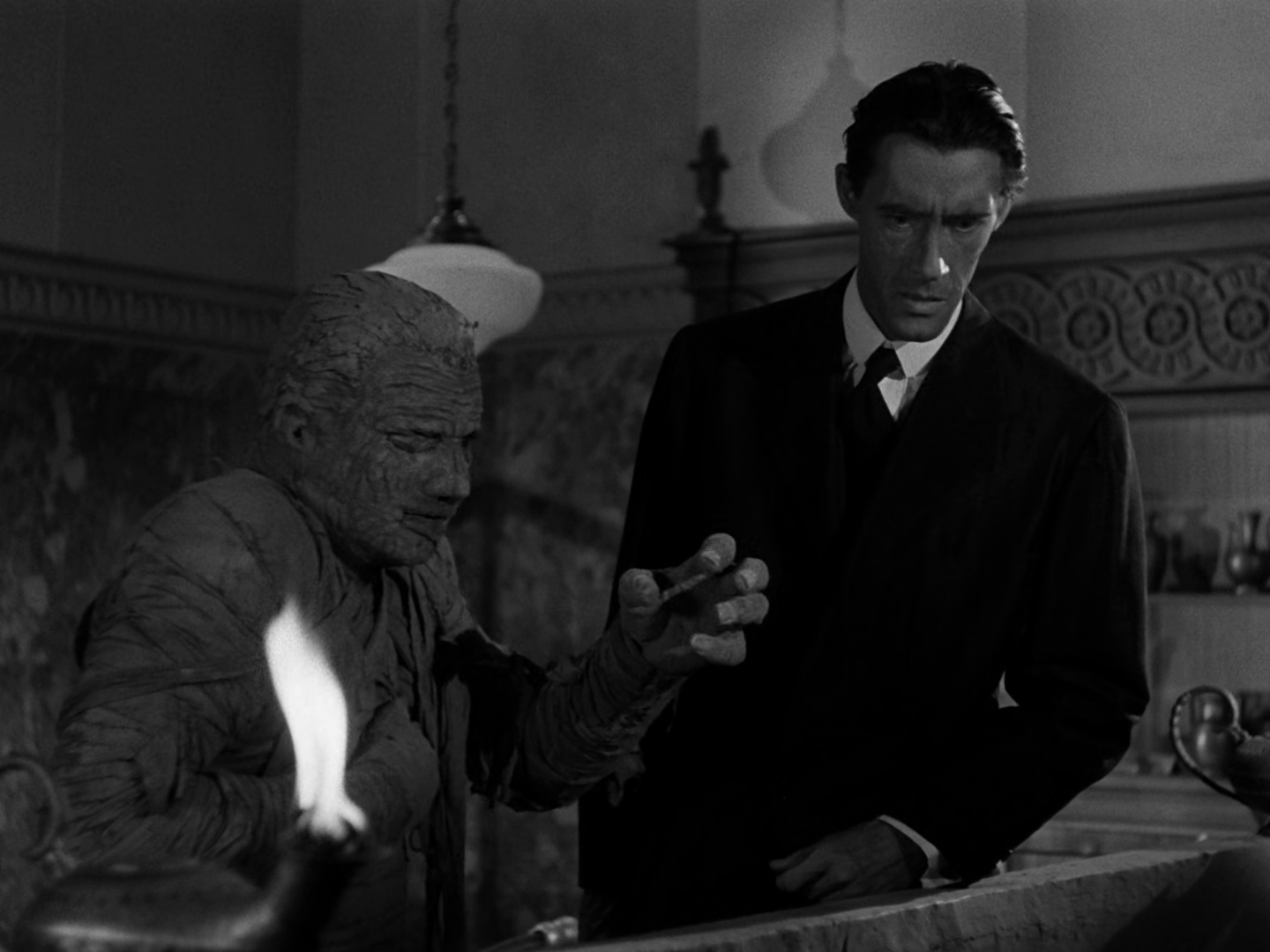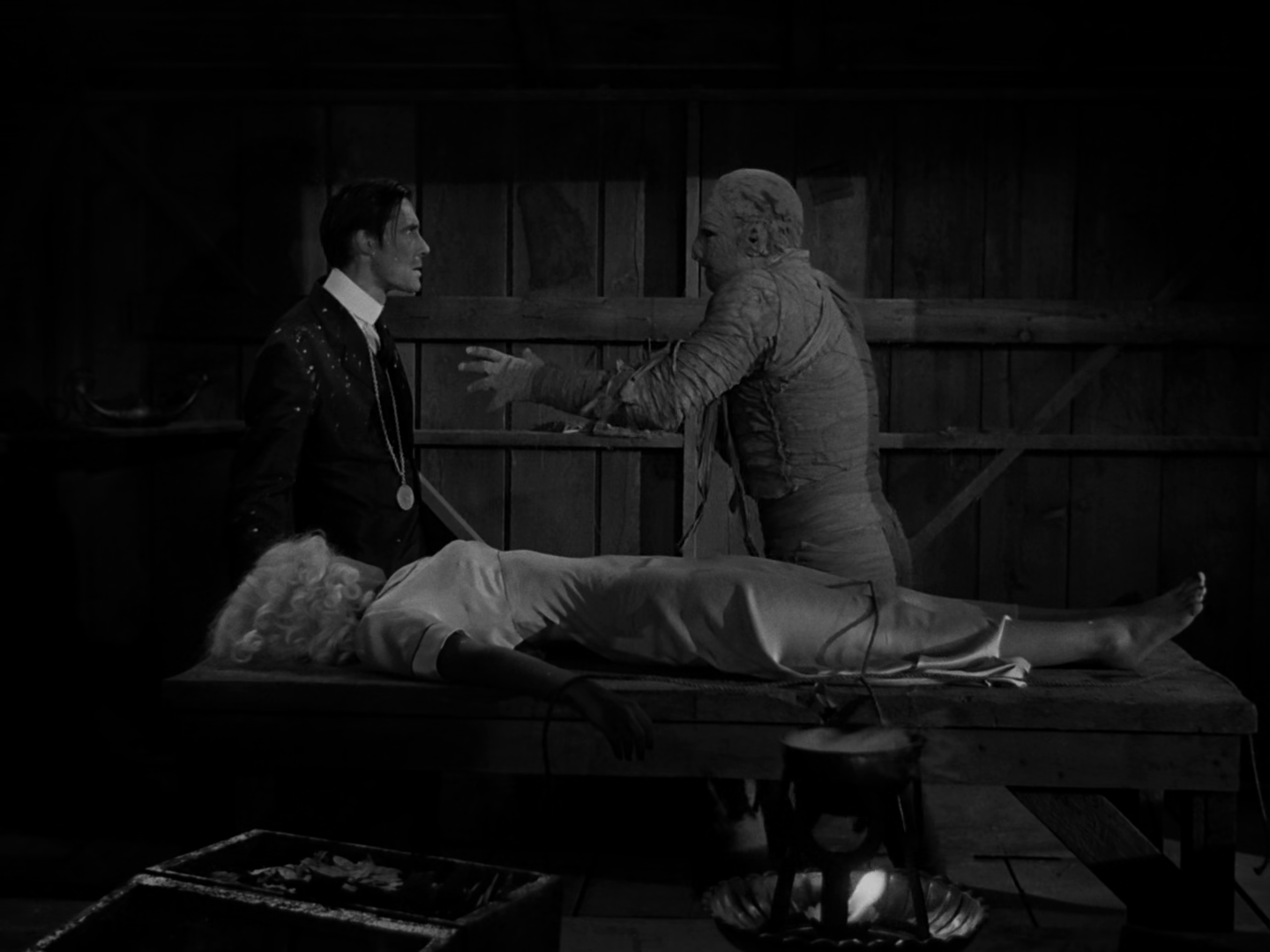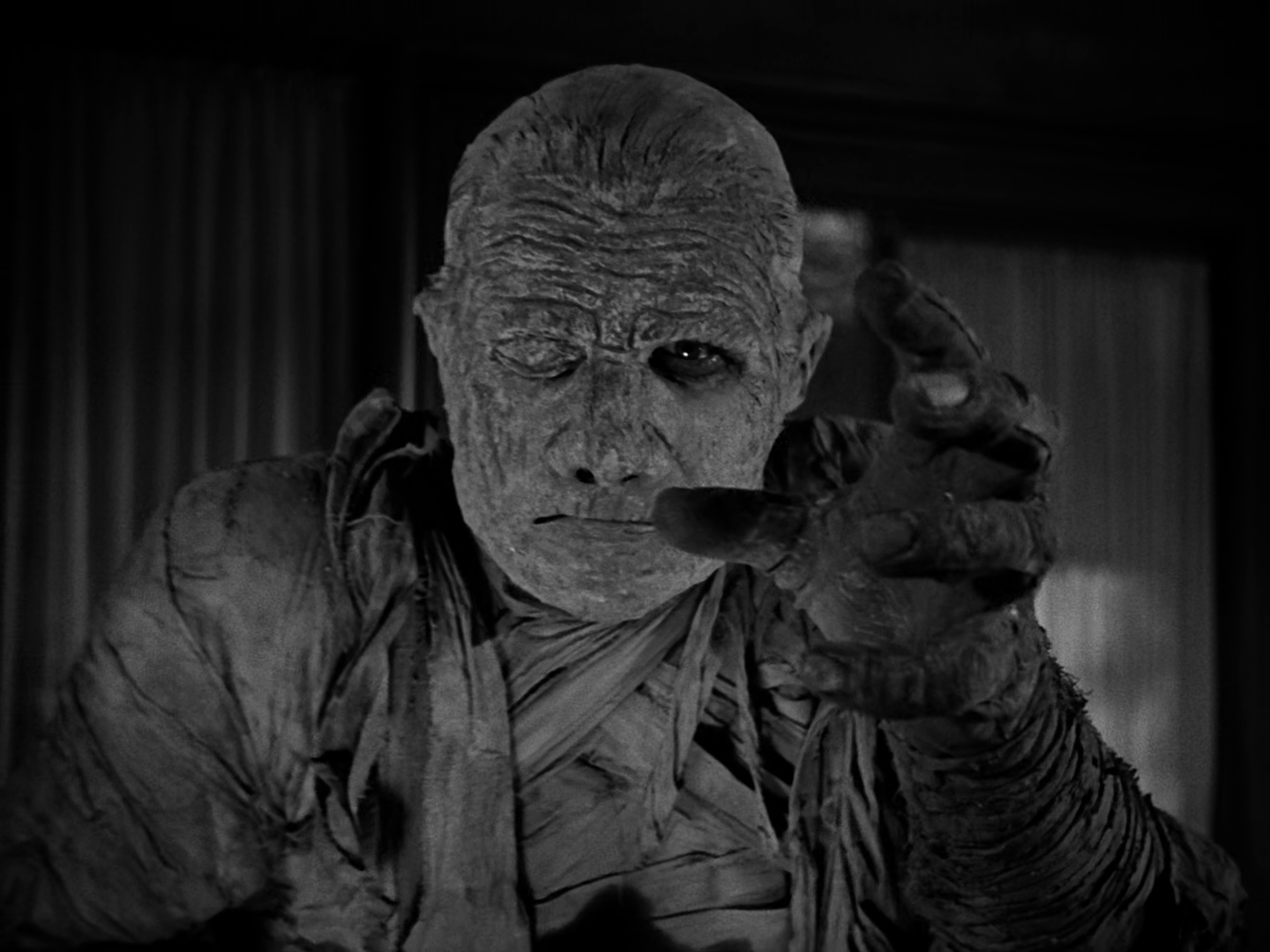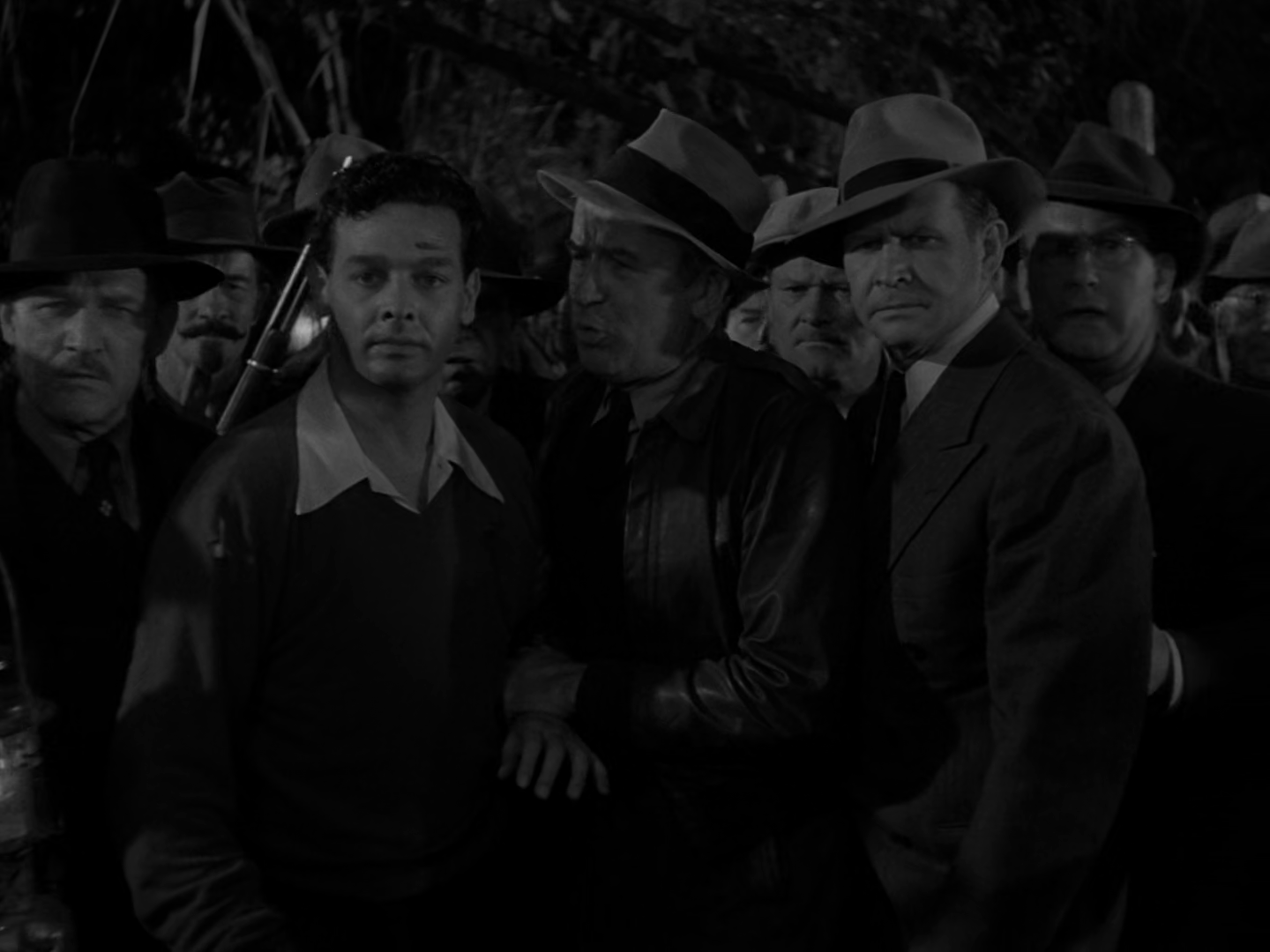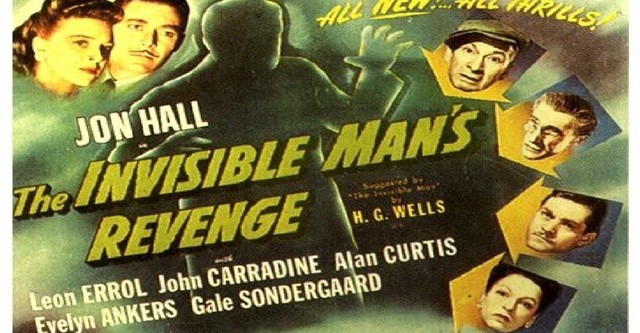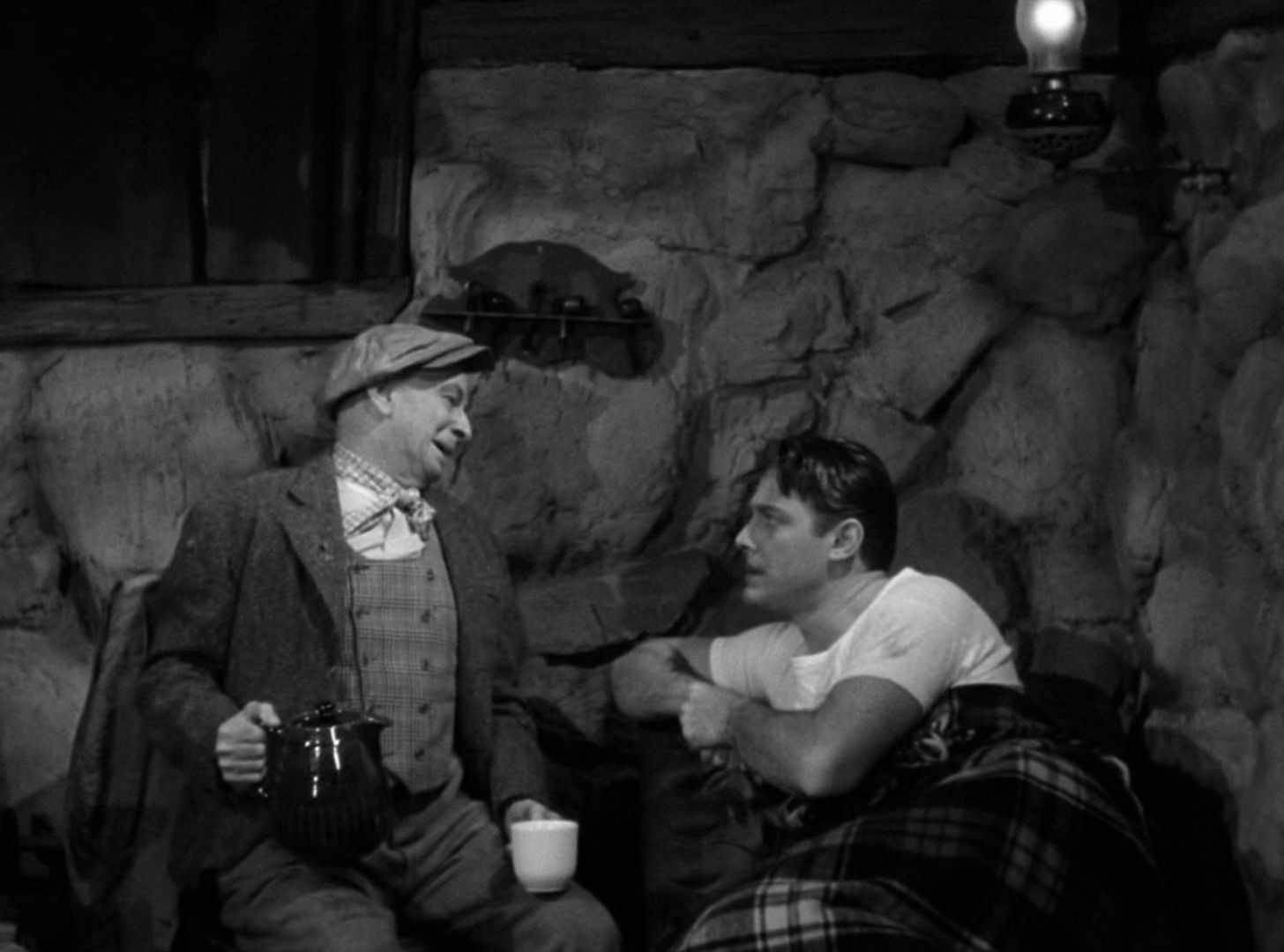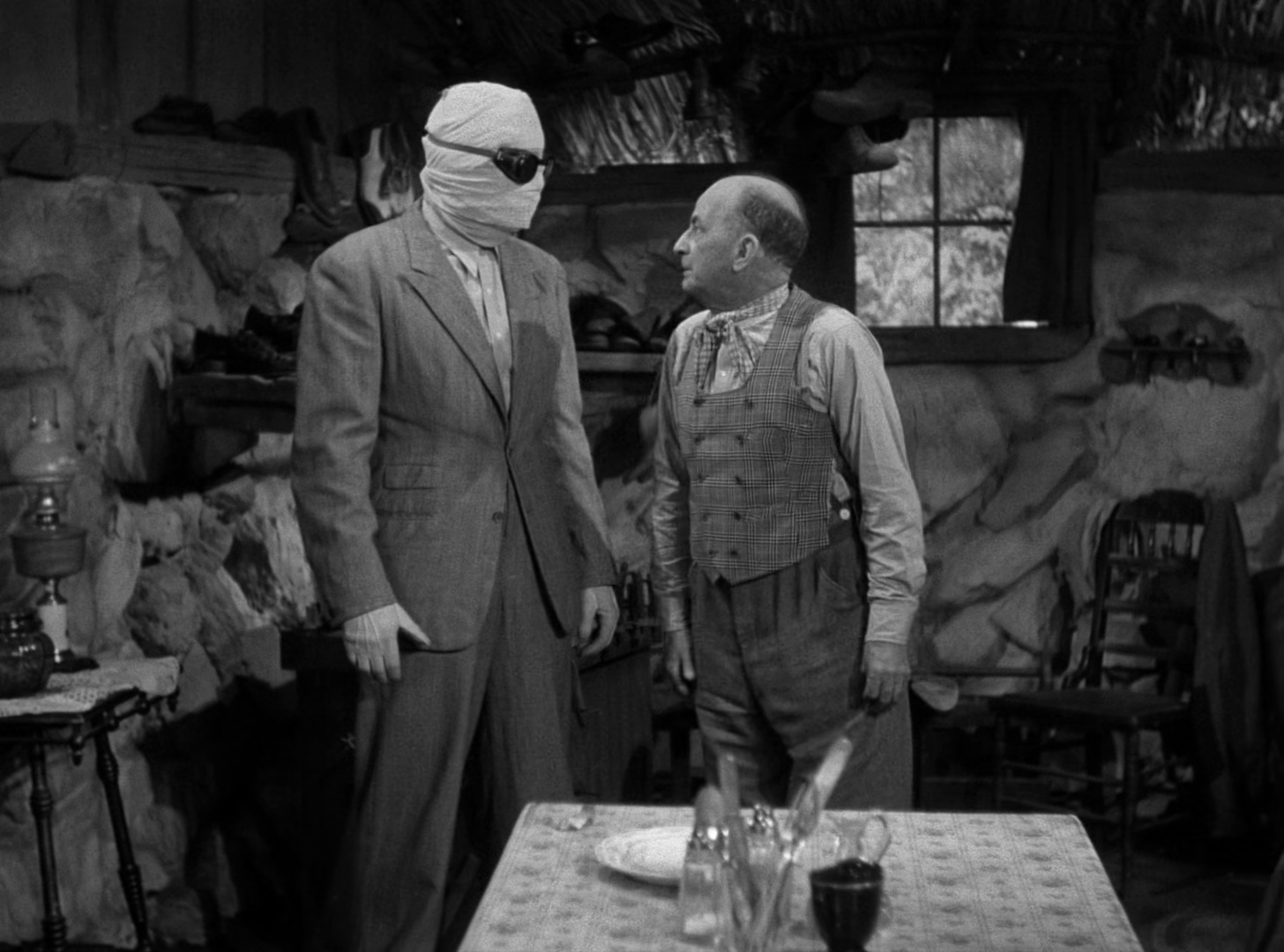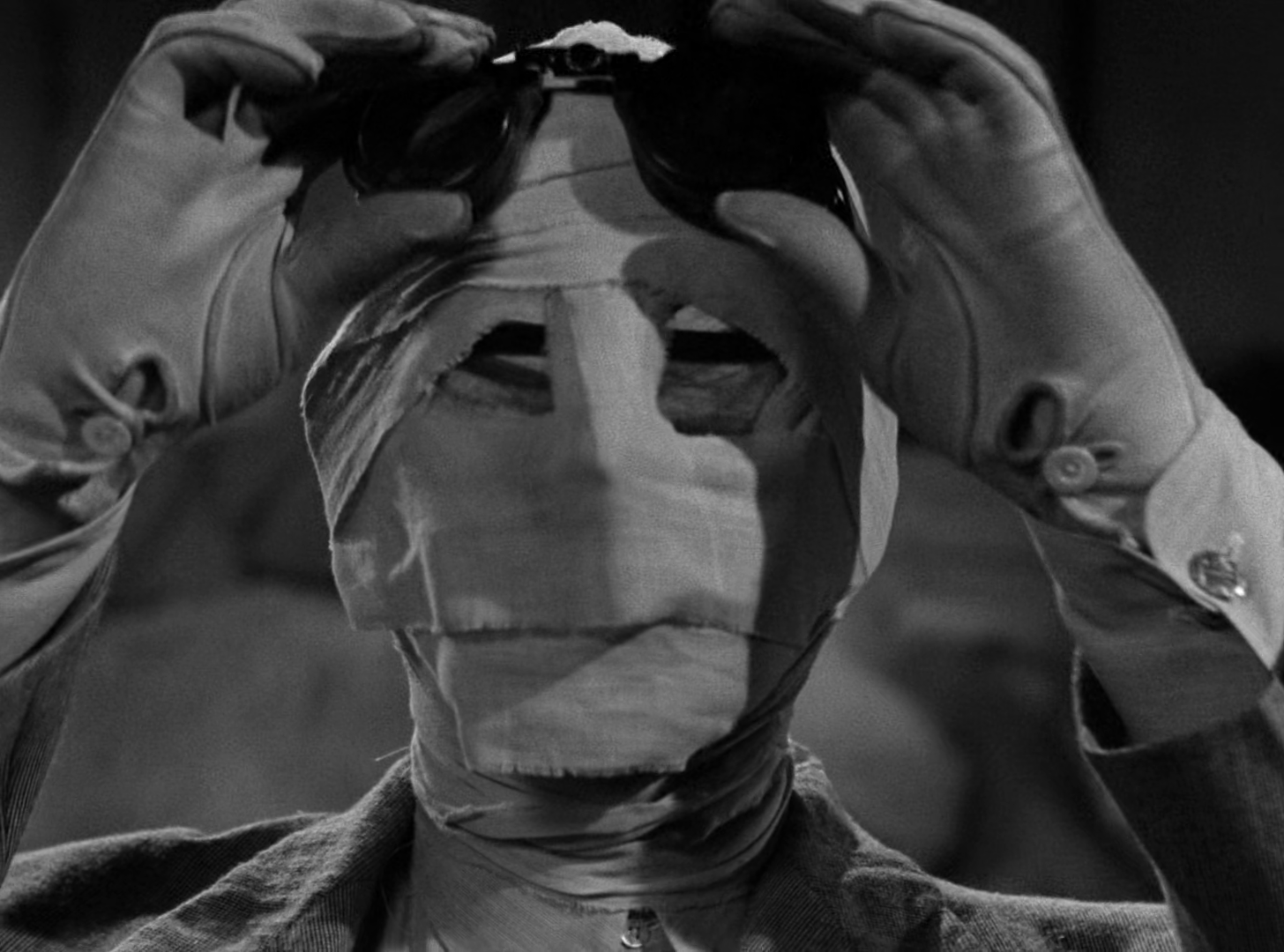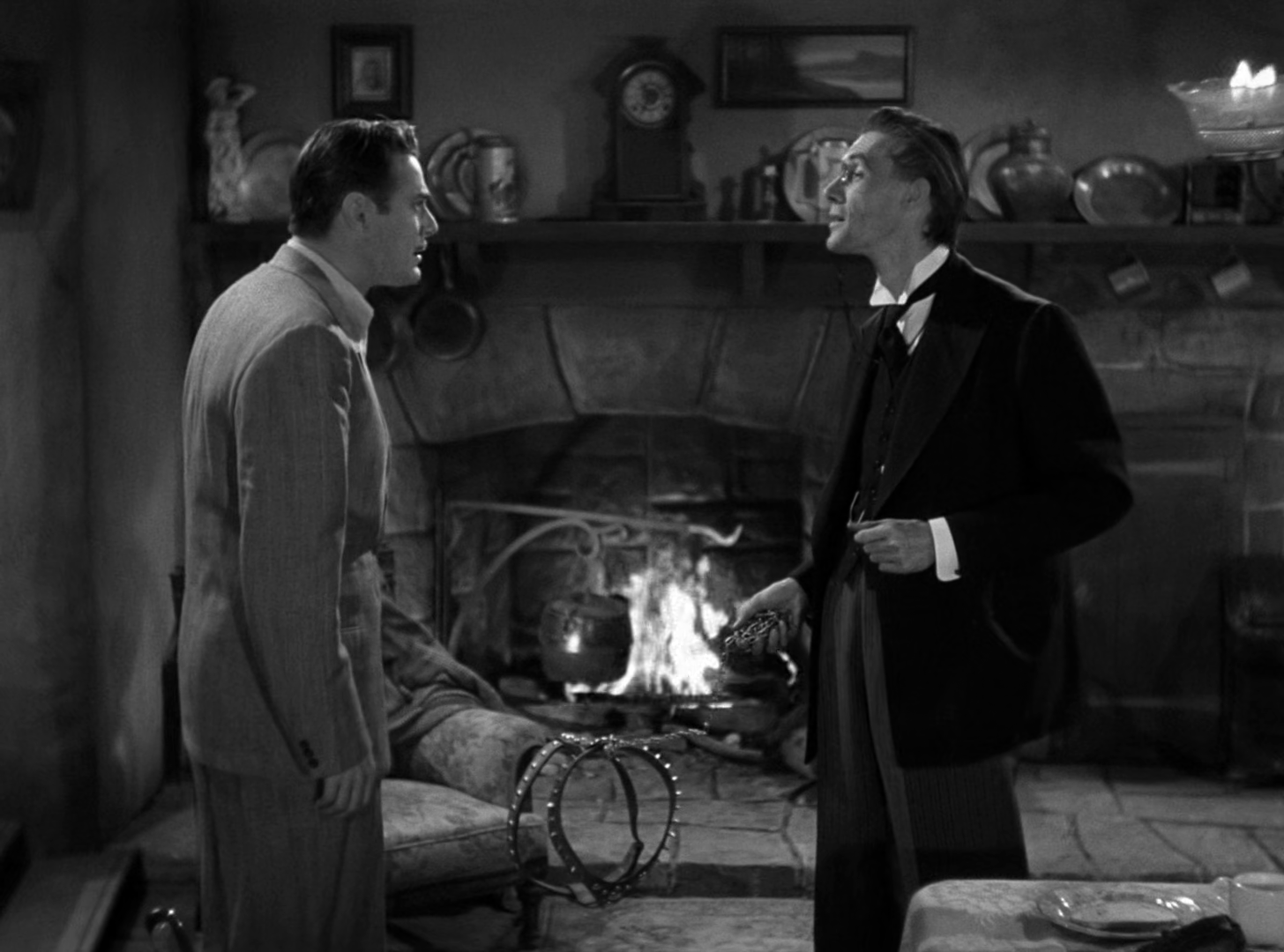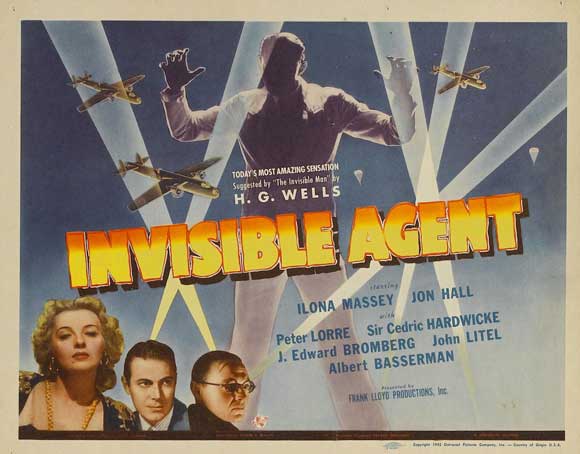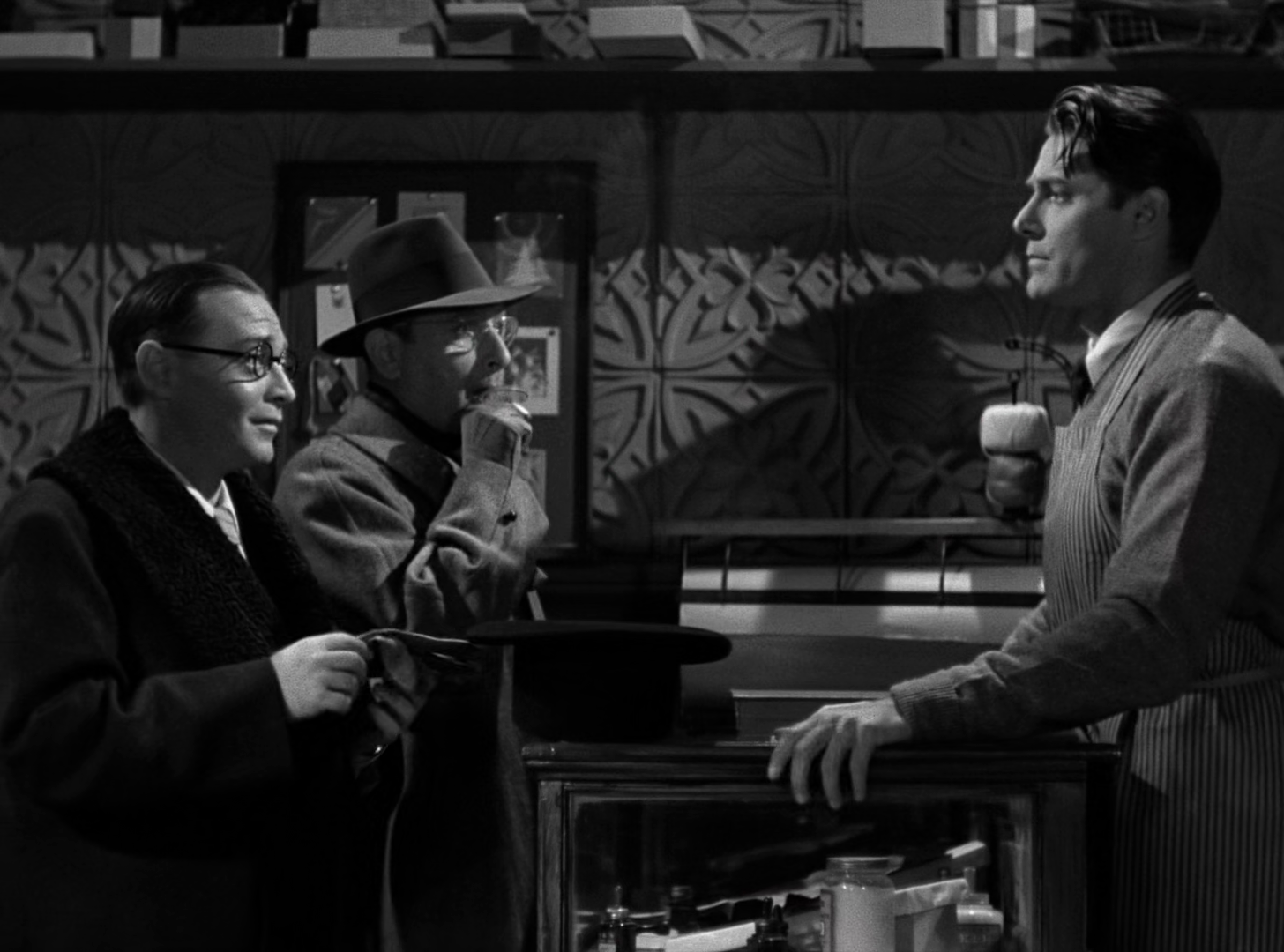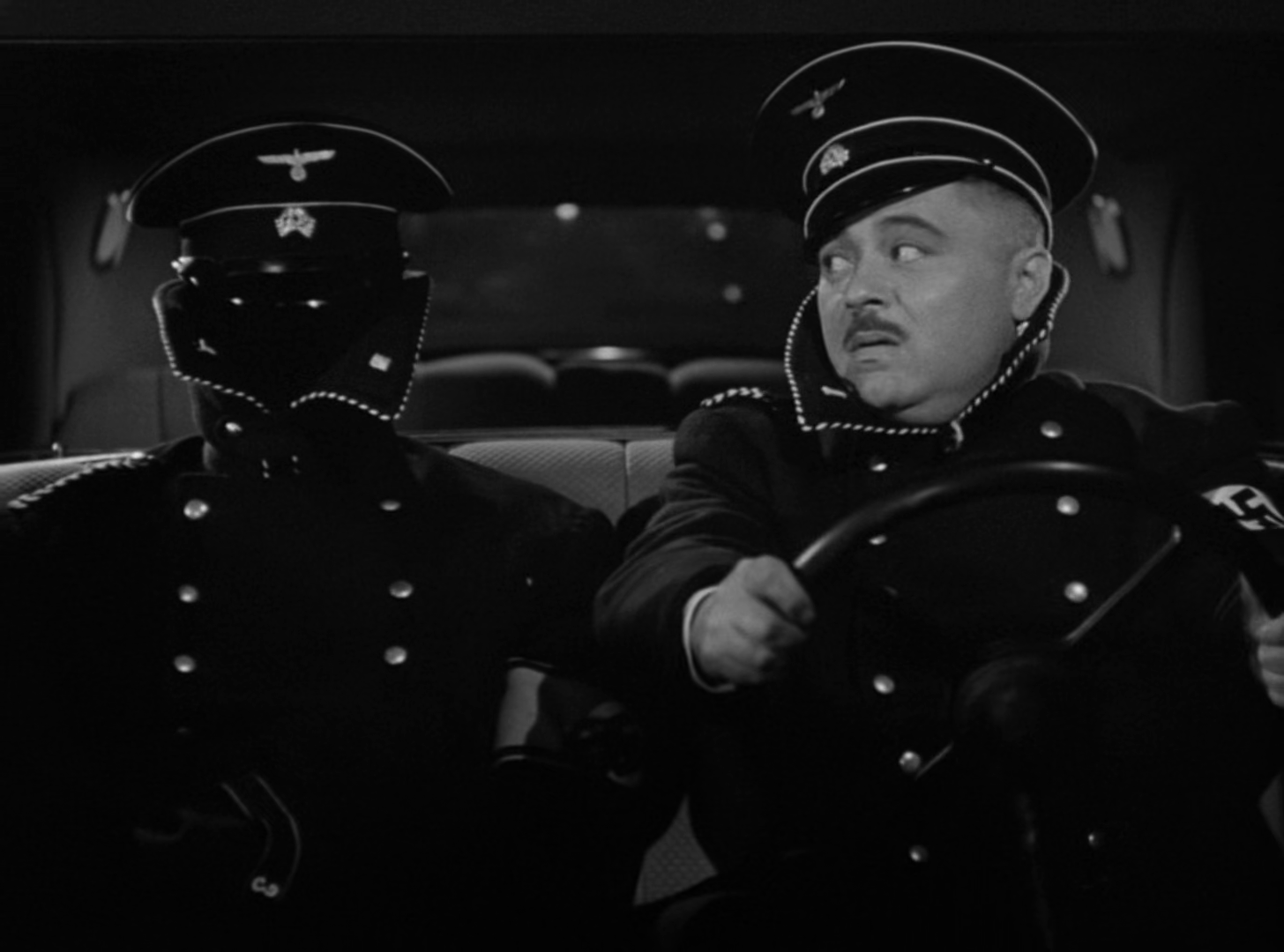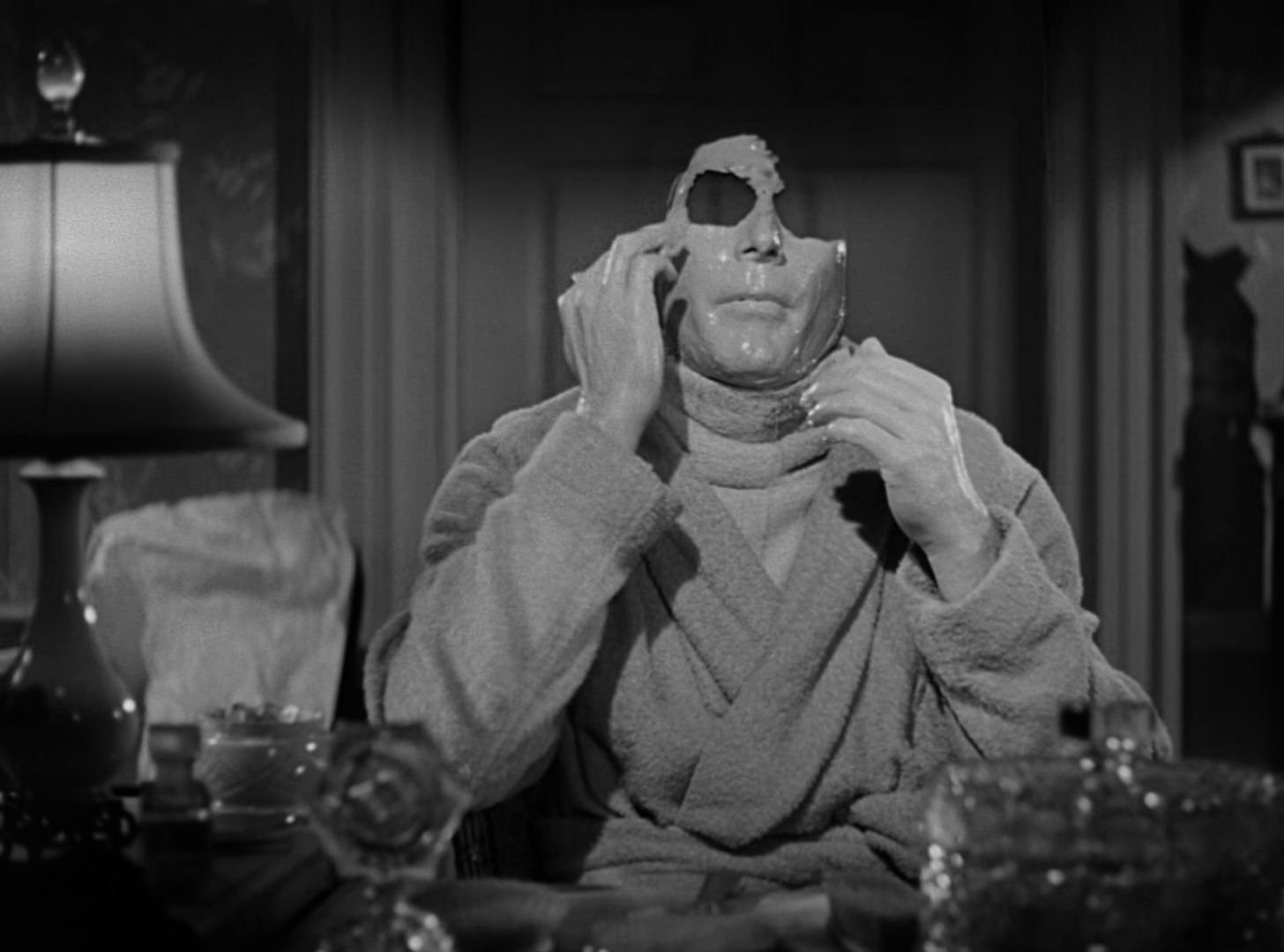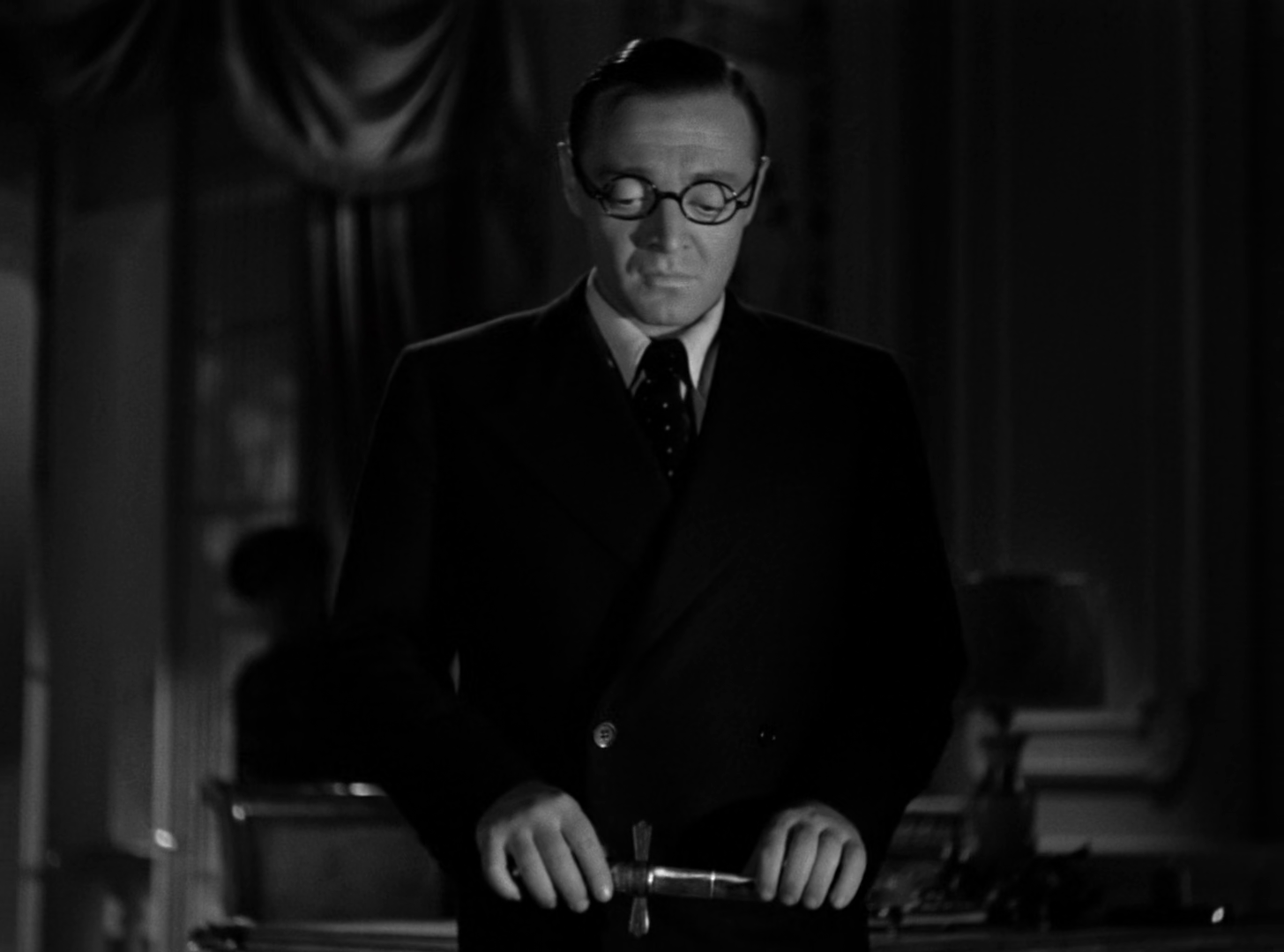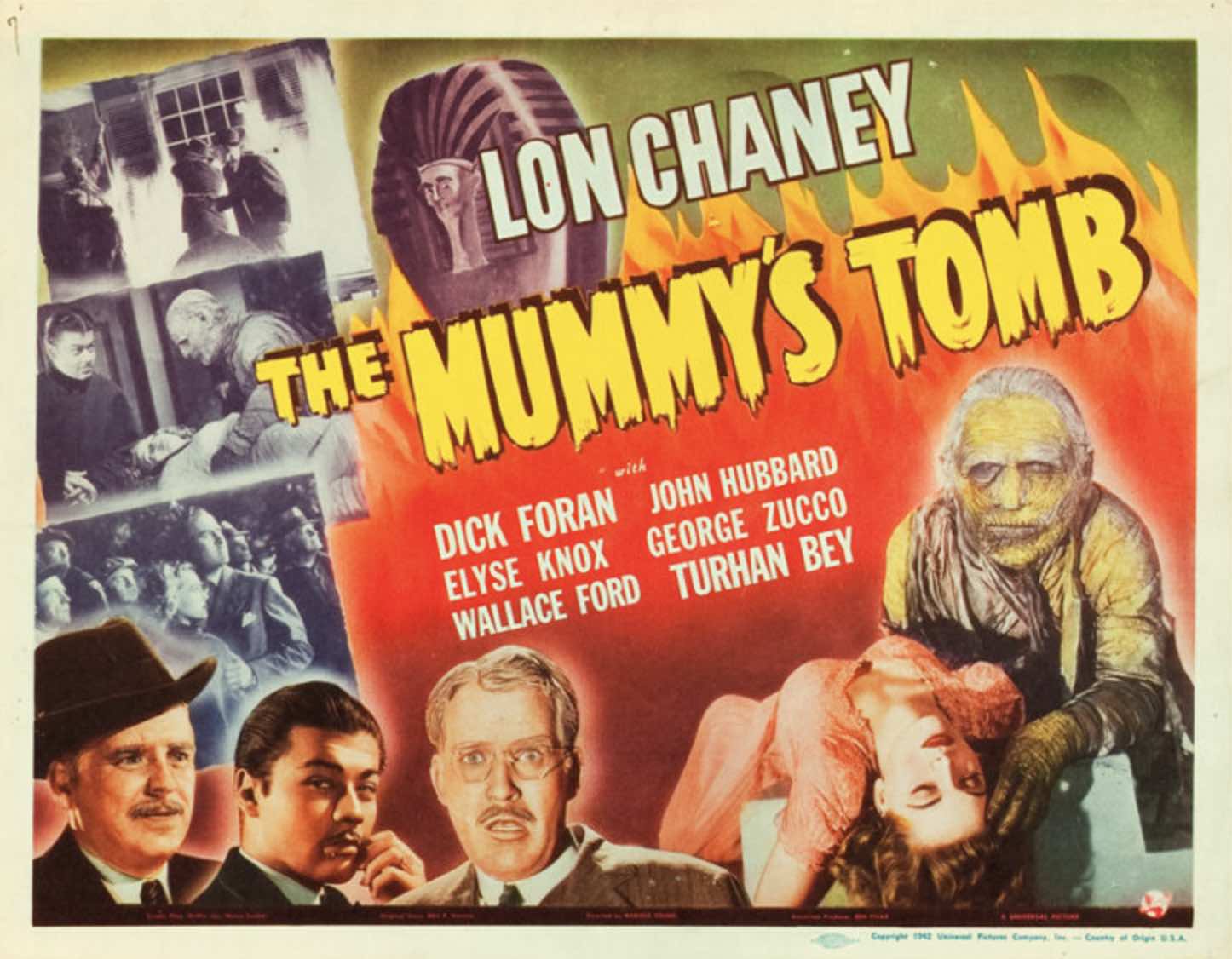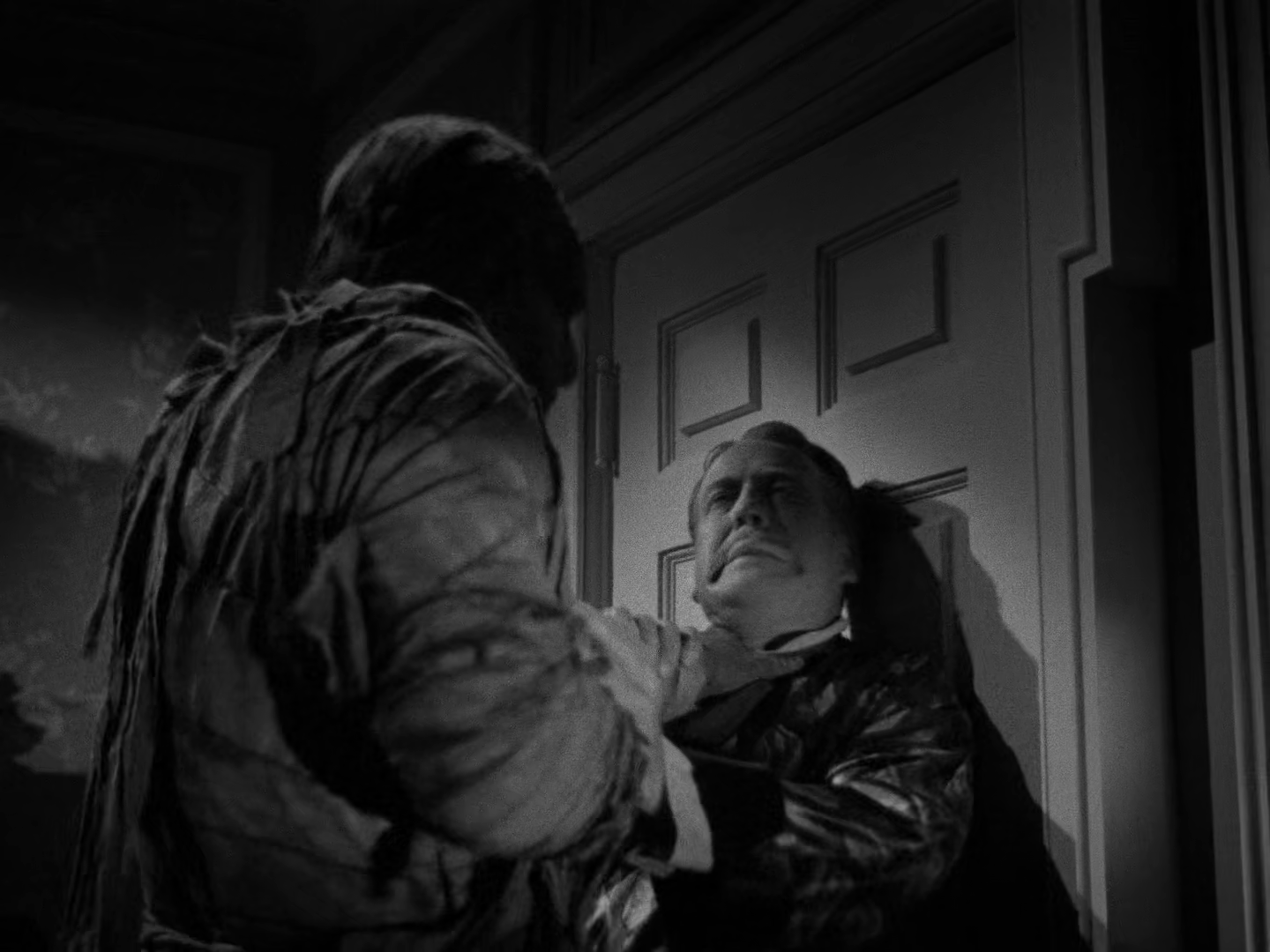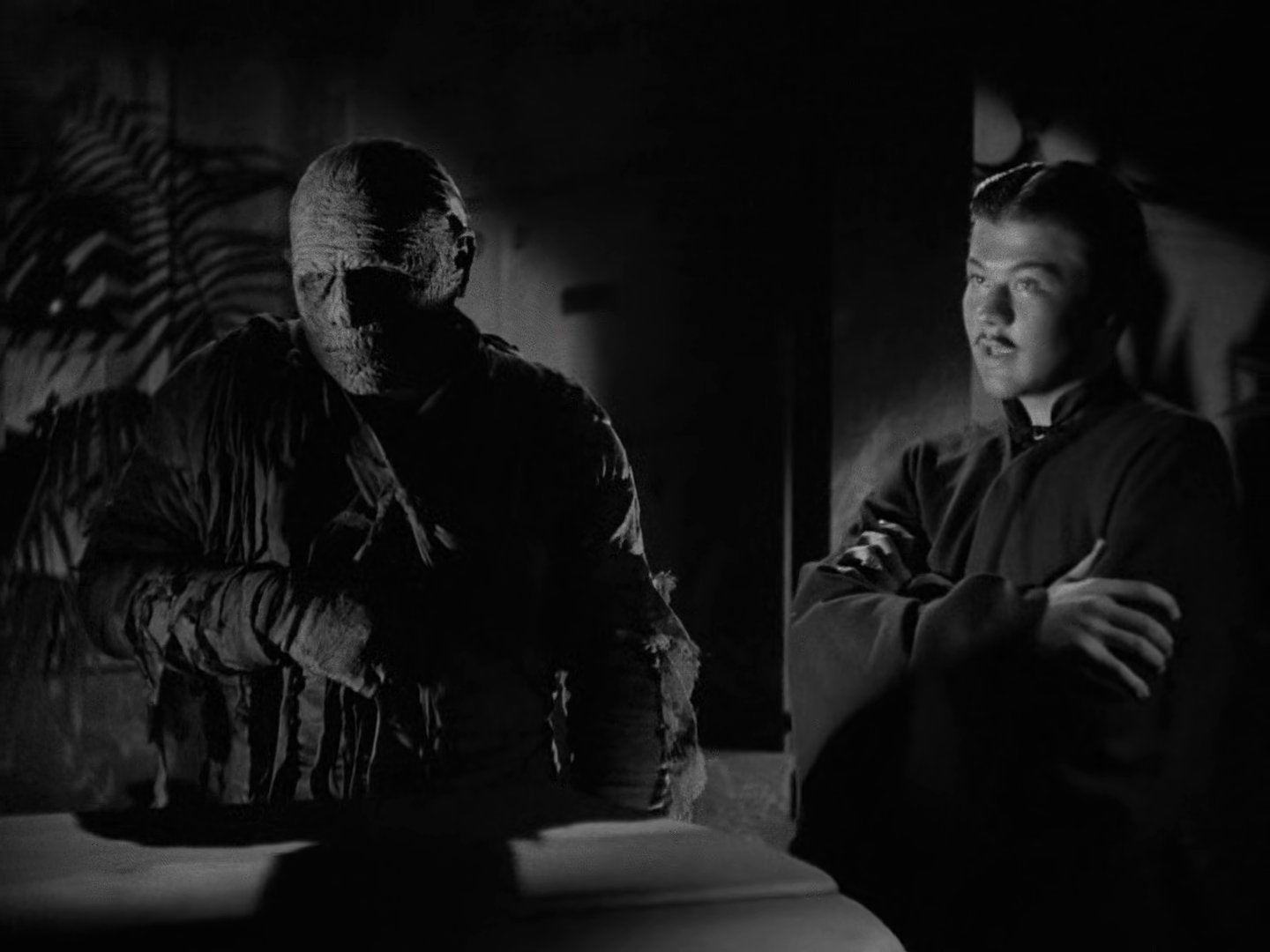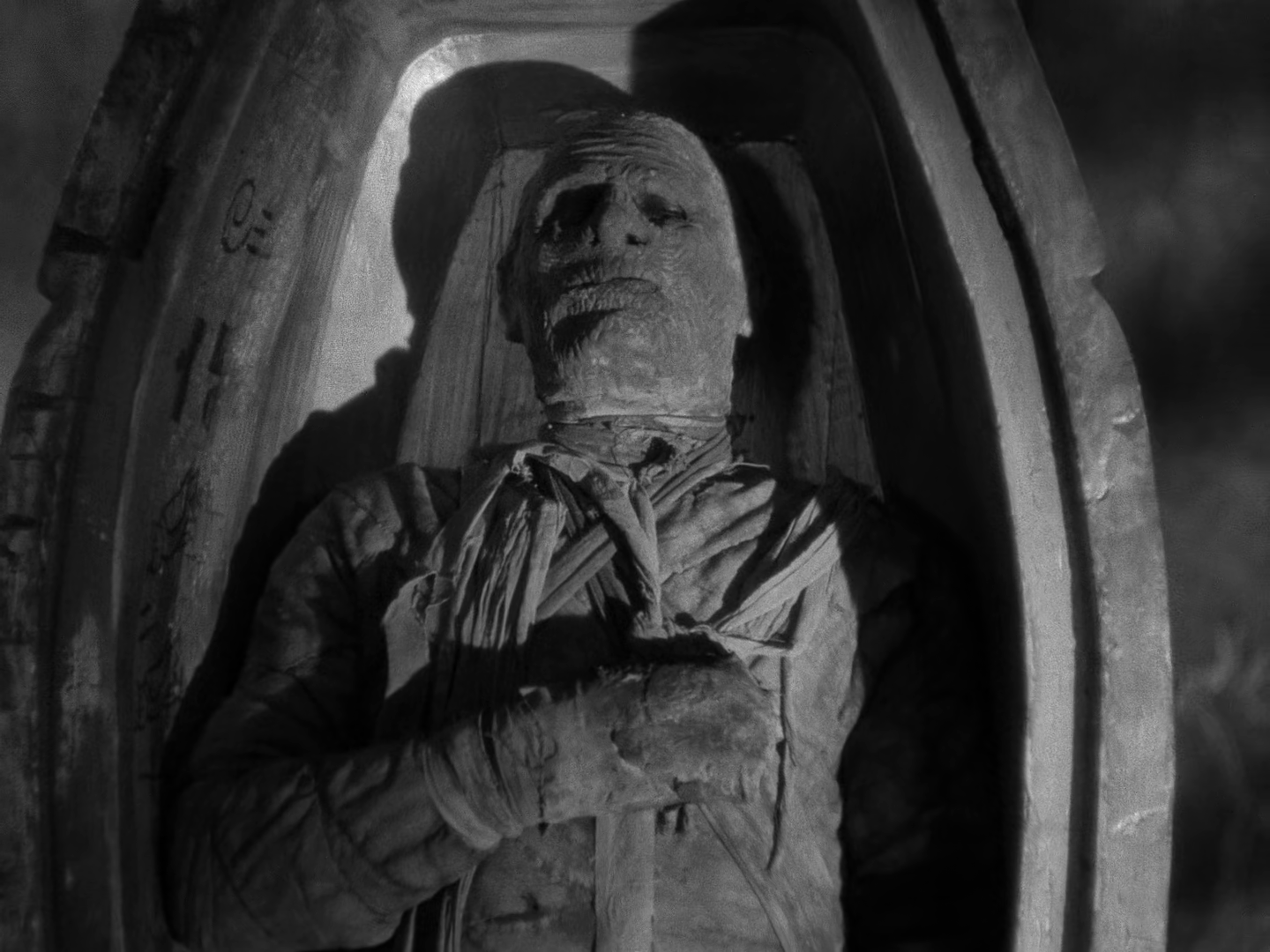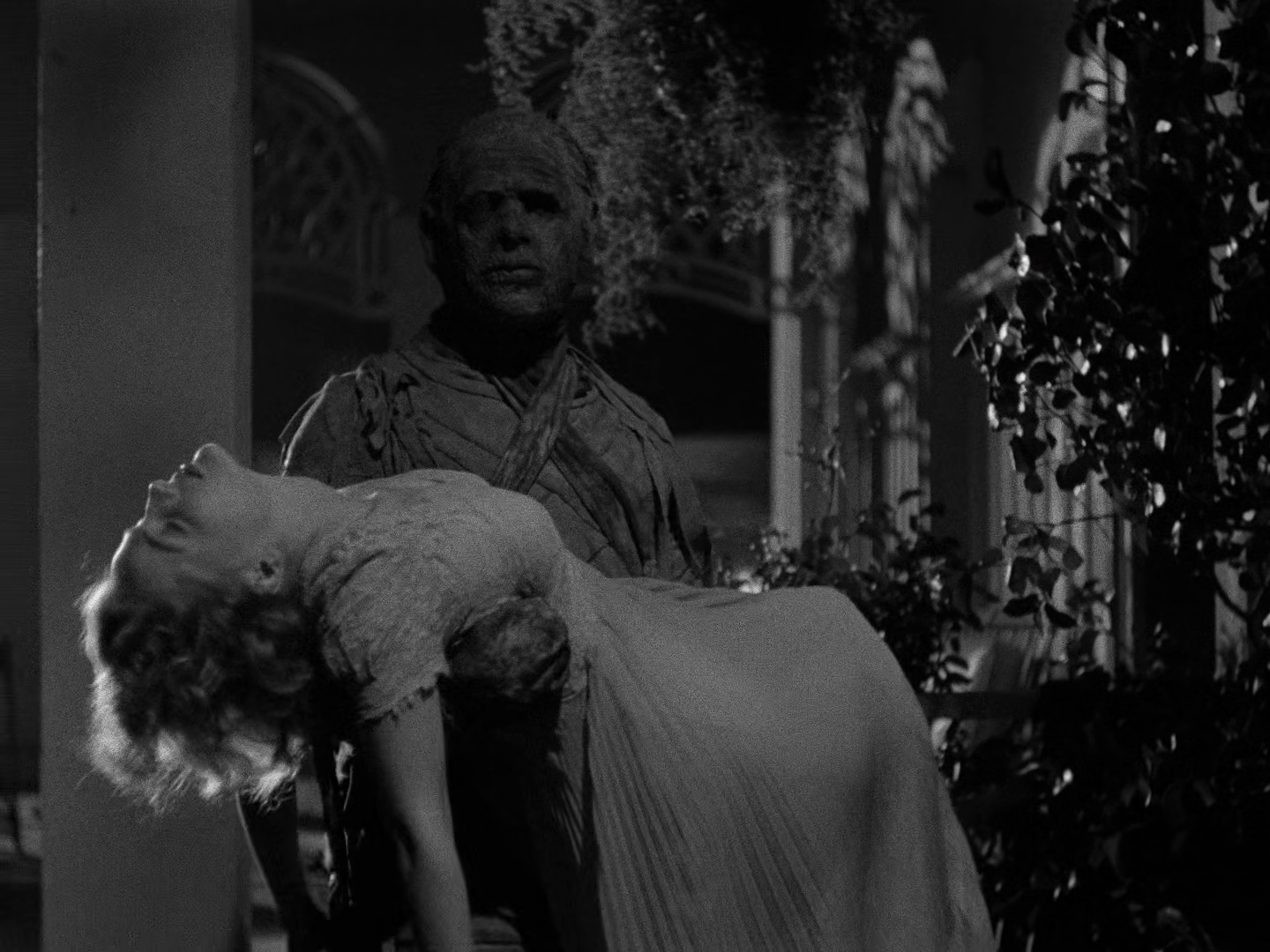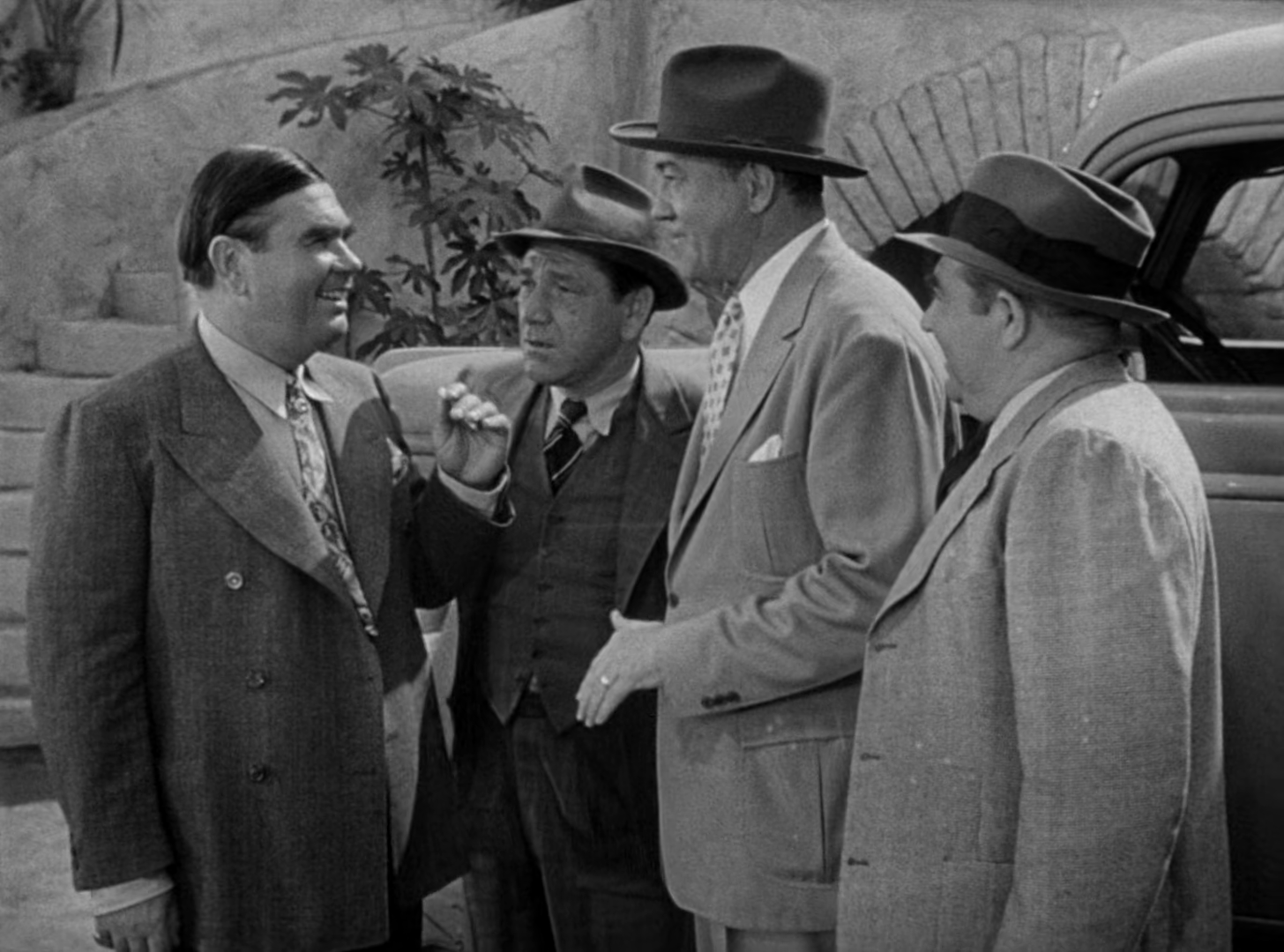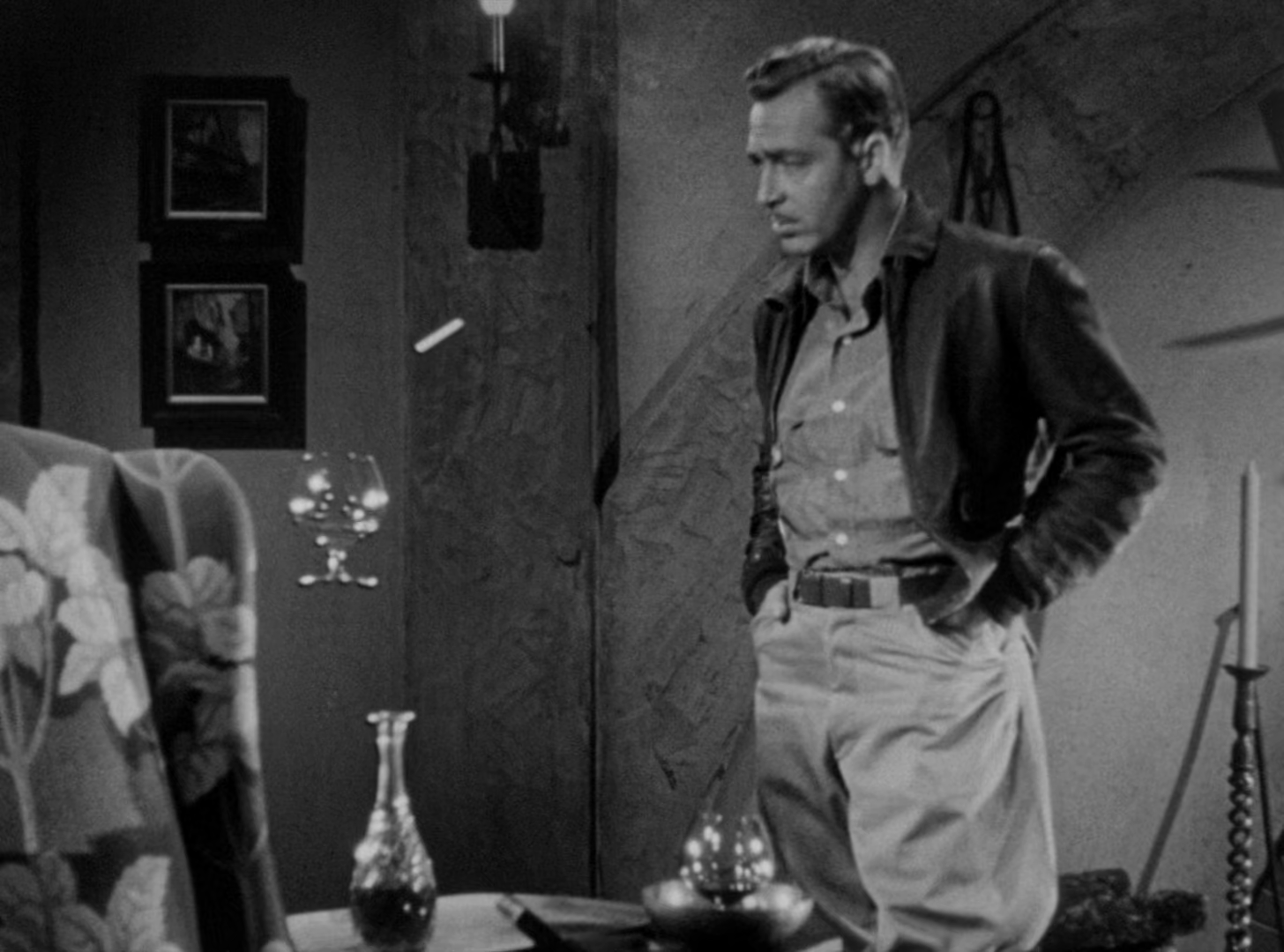Despite being shot to death at the end of both previous instalments the Gill-man is back for this third and final entry in the Creature from the Black Lagoon Trilogy, where they bring the creature out of the “Rampaging Monster” category he’d found himself trapped in for Revenge of the Creature and now he’s firmly in the “Mad Scientist” genre and with a few added wrinkles to the Gill-man’s character as well.
What if we could genetically enhance humans so that they could survive on other planets? This is the motivation that drives the plot of The Creature Walks Among Us, where we have the somewhat unhinged Dr. William Barton (Jeff Morrow) leading an expedition into the Everglades to capture the creature, using his luxury yacht that is fully stocked with everything a mad scientist could need to fulfill his weird plan of genetically modifying the Gil-man. Along for the ride is geneticist Dr. Tom Morgan (Rex Reason), their guide Jed Grant (Gregg Palmer) and two other colleagues Dr. Johnson (James Rawley) and Dr. Borg (Maurice Manson), who handles a fish finder with flair, but the real problem doesn’t stem from the dangers of tracking creature with a kill list a yard long, instead, we have Marcia Barton (Leigh Snowden) the abused wife of this film’s resident mad scientist to rachet up the tension.
It should be noted that the beasts really outnumber the beauty in this film.
After a little drama involving Marcia diving too deep and suffering from the “raptures of the deep” - which forces him to go into full-on hero mode to save the day - and then there is the fact that during all this the Gill-man was doing some underwater stalking of his own, but eventually, we get our group deciding to do a little night fishing to catch the creature and they outfit a small motor launch with harpoons guns and rifles. Needless to say, things don’t go all that smoothly, despite Borg’s adept use of his portable sonar device the creature is able to launch several attacks against them, and you really have to question the tactics of these idiots as they know this creature is incredibly strong and has killed many times before yet they think puttering around on a small boat in the dark is a good idea. Lucky for them, the Gill-man catches his own case of the stupids and it leaps aboard the boat, grabs a can of gasoline and pours it all over himself. This may sound strange to you but it’s even weirder to watch.
Did he think he was a Buddhist monk fighting oppression?
When good ole Jeff tosses a lighted torch at the creature the poor thing bursts into flames and dives back into the water, but as it had already been hit by a couple of harpoons laced with sedatives its badly burned body floats to the surface and is taken back to the ship, where they quickly realize that the creature’s outer scales have burned away, revealing a layer of “human skin” underneath. While the creature’s gills have been melted shut they discover dormant lungs and so they decide to perform a tracheotomy to jumpstart the lungs and the Gill-man into just a man, well, a rather large and powerful man that is still quite capable of rippling through doors and tossing people around like tenpins. And this is where the film runs into problems, it stops being a “Creature from the Black Lagoon” movie and quickly turns into a Frankenstein’s monster movie, with the creature lumbering around like a knock-off Boris Karloff, and where we once had Bud Westmore’s amazingly designed Gill-man suit to strike awe and terror in all who witness it, we now have this mutated and muddled mess wandering around in sailcloth pyjamas.
This look of the creature is more pathetically sad than frightening.
Stray Observations:
• Rex Reason and Jeff Morrow had previously teamed up in Universal’s This Island Earth, but in that film, Morrow played a bit of a dickish alien who was doomed to die, while in this one he’s a psychotically jealous husband who is doomed to die. I guess one could call that range.
• The tracking of the creature via sonar, as it swims after our heroes, reminded me of the scene in Ridley Scott’s Alien where the crew of the Nostromo tried to track the xenomorph through the ship’s air ducts, with the same amount of tension here.
• The creature doing some underwater stalking is also an obvious callback to him tracking the beautiful Julie Adams in the original.
• They bring the creature on board to save it after having set the poor thing aflame, but then they just leave it alone and unrestrained so that it can simply get up and attack the unwary whenever it wants.
• Seeing the Gill-man wrapped up in bandages had me briefly wondering if I was still watching a Creature from the Black Lagoon movie or had suddenly switched over to watch one of The Mummy sequels instead.
“Do you think it’s Boris Karloff under those bandages?”
Directed by John Sherwood, who would later go on to direct the rather bizarre science fiction flick The Monolith Monsters, this third entry in the Creature from the Black Lagoon Trilogy leans heavily into the soap opera drama; between Jeff Morrow’s insanely jealous husband, Leigh Snowden as the abused wife and Greg Brant’s sailor turned attempted rapist, while the Gill-man is forced to play second fiddle to all this melodrama. We do get some interesting moments where Morgan and Barton have philosophical discussions on whether the creature is predestined to be a mindless killer or whether it has gone through some sort of sped-up evolution, making it more human and thus will return kindness with kindness of its own. This pseudo-bullshit doesn’t really go anywhere and the film spends way too much time with the ex-Gill-man moping around a sheep pen, that is until Barton murders Grant in a fit of jealous rage and then tries to frame the creature for the deed. I must say, when your title monster is turned into a plot device for a lame love affair you know you’re in trouble.
“Could someone call my agent?”
I won’t fault the actors for this film’s failings, poor Greg Grant didn’t have much to work with as a one-dimensional asshat/rapist, and even the director did the best he could under the limited budget the studio saddled him with, but when the amazing Creature from the Black Lagoon is relegated to playing second fiddle to this collection of misfits one can’t help but be a little disappointed with the end result, and while there is still some nice underwater photography, with Rico Browning again performing great work as the Gill-man – even if a lot of this footage is borrowed from the original film – but the issue of making the Gill-man an unsympathetic lumbering monster is unforgivable and the film's startling conclusion is as ambiguous as it was lame, with the creature once again being shot full of holes and disappearing into the night. Basically, The Creature Walks Among Us is another middle-of-the-road B-movie that works best if you forget it has any connection to the previous entries and just consider it another “Atomic Age” science fiction film.
